














COST OF LIVING CRISIS



















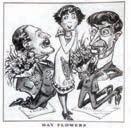
I’d heard the armoured cars roll into the district and could hear the crackling of military radios �
MICHEÁL Mac DONNCHA looks back at the critical events leading up to the 1922 Dáil election, the splits that haemorrhaged into the Civil War, and the duplicitous role of the British Government in pushing Ireland into conflict
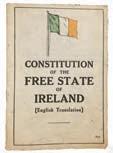
DANNY MORRISON goes back 50 years to give a first-hand account of Operation Motorman when one of the largest military operations undertaken by the British Army since the end of the Second World War was mounted across the Six Counties on 31 July 1972.

CLAIRE KERRANE writes on Sinn Féin’s cost of living survey, and offers a blueprint for what could be done across the island to help households in trouble with spiralling costs
The scale of Sinn Féin’s achievement in the Assembly election cannot be underestimated. In the decades since the election of Bobby Sands in Fermanagh South Tyrone in April 1981, the party has consistently grown its support across the island. No other political party in Ireland has had this scale of continued electoral success.
No other party has also had to face the challenges put in the way of Sinn Féin. The party has grown support in a political environment where many wanted it to fail, where electoral systems were unfair and the institutions they were being elected to were lacking in equality. No other party on the island has seen its members harassed, attacked, and murdered on the scale endured by Sinn Féin.
Now Sinn Féin has a mandate to lead the Assembly’s Executive and a crosssection of other parties have a mandate to select ministerial portfolios and get on with the job of governing. They are being denied their democratic mandate by the actions of the DUP, enabled and encouraged by Boris Johnson’s Conservative Party government.
In the interview with Sinn Féin Vice President Michelle O’Neill carried in this issue, she clearly lays out the role the Irish Government must play in standing up to the British Government. As co-guarantors of the Good Friday Agreement, they must actively pressurise and stand up to the British Government in this regard.
‘They need to step up’ was the clear message from O’Neill.
Another article in this edition gives a historical perspective to the politics of 2022. It is Micheál Mac Donncha’s piece on the skewed and flawed 1922 Dáil election and the beginnings of Civil War in Ireland a century ago.
Then, a fledgling government in Dublin buckled too easily under British pressure and threats. They allowed a unionist anti-democratic hegemony arise in the Six Counties, with a violent growing denial of human rights for the abandoned northern nationalist population.
Michelle O’Neill also spoke passionately of her experience on the election canvas and how people told her that, “For me, this is about the future, what I would want for my children, and my grandchildren”.
Since the election, the British Government have sought to deny the mandate created by hundreds of thousands of voters who cast a ballot for a functioning powersharing Executive which would tackle the cost of living crisis, and act on issues to deal with health, education and housing. They are actively stalling an assembly where the majority of MLAs support the EU protocol.
Voters must have the future they clearly cast a ballot for. •

No other party has also had to face the challenges put in the way of Sinn Féin
It has been a hectic 2022 for Michelle O’Neill so far. With the Executive stalled, a long Assembly election campaign, and now with Sinn Féin as the largest party in vote share and Assembly seats, the Sinn Féin Vice President is the First Minister in waiting. An Phoblacht caught up with the new First Minister in between meetings with Taoiseach Micheál Martin, Foreign Affairs Minister Simon Coveney, British Prime Minister Boris Johnson, and Scottish First Minister Nicola Sturgeon.
O’Neill talked about all of this as well as her experience of the election campaign, her plans as the new First Minster, the cost of living crisis, citizen assemblies, and the border poll.
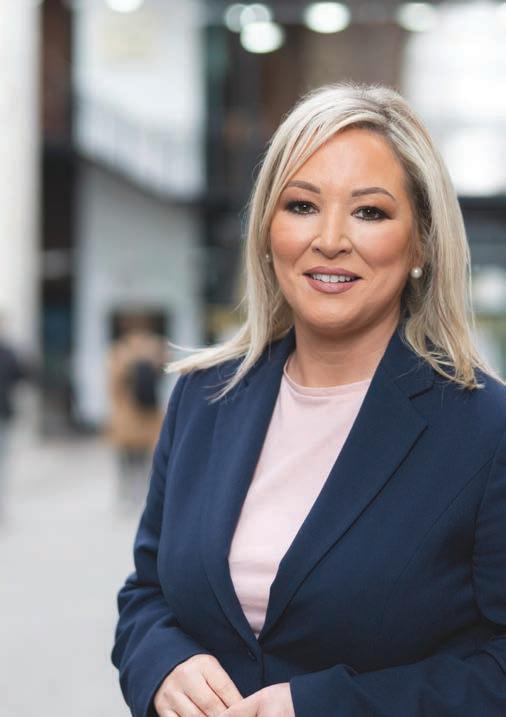
In a broad ranging discussion, we started by asking Michelle about her experience of the canvas as a candidate and party leader. She told us that, “It was probably one of the best canvases I have ever been on to be honest. You could feel a mood with the public that our message was resonating with them, that they wanted the real change we were talking about. It was a powerful canvas on many fronts. People were very engaged. People got the politics.
“We said at the start of this campaign that big picture politics wins elections and brings people with you. People were speaking back to us about our approach. They understood it, they had digested it. They got the historic nature of the election and what could be achieved.
“They very much wanted us to deal with the things that they were genuinely worried about. The cost of living crisis and the need to fix our health service were probably the biggest things that were coming up on the doors.
“It was an election that was like no other for me, because it was a big picture politics election in many regards. You get to see so many people, who do amazing things every day. You get the chance to meet groups and talk to people. It was powerful experience being everywhere from Portaferry to Strangford to Foyle to Strabane, to Belfast, to everywhere. The mood was the same everywhere.”
Focusing specifically on the election result and her experience of the count, O’Neill told us that, “For me, this is about the future, what I would want for my children, and my grandchildren. I got that said back to me a lot of times, that people thought that was what I was offering them, a future, a better future. People were saying back to me. ‘Didn’t we do well. Aren’t we great, I like what we are doing. There was a lot of collective ownership of what we were doing. That shone through for me.”
Moving on to the cost of living crisis, we asked what was Michelle’s experience of this on the canvass. She said that:
“People are genuinely concerned because they are heating reports on the costs of energy every day. The cost of food is going through the roof, clothes, everything costs more. I think that was definitely something people are worried about. They are particularly worried about the winter. They know what is coming down the tracks.
“We have made a commitment to put money into the pockets of workers and families. We stand over that commitment, but we need an Executive in which to do it, so the DUP had walked away before the end of the mandate. People were clearly saying to us to try and make politics work, get back in there and help us.”

Moving onto the role of the Dublin Government, we asked the First Minister about her meetings with Micheál Martin and Simon Coveney. When we spoke, O’Neill was coming out of a series of meeting with the Taoiseach and she told us that she had specifically arranged to meet with him in advance of meeting Boris Johnson:
“The Good Friday Agreement is under threat and people shouldn’t be in any doubt about that. The Tories and Boris Johnson care little for the interests of the people here and they certainly care little for our peace agreement, the Good Friday Agreement. So, it is important that we concentrate, that we constantly make the case to the Irish Government that as co-guarantors of that agreement, they need to step up.”
Citing the three relationships of the North, North-South, and East-West that underpin the Good Friday Agreement, O’Neill said, “The DUP have walked away from North-South as far back as last October. They have walked away from the Executive in February. They are still boycotting both of these things.”
Focusing briefly on the role of the British Conservative Government in this, O’Neill said, “I think there is a deliberate attempt on the part of the Tories to dismantle the Good Friday Agreement. We cannot allow that.”


Returning to Sinn Féin’s expectations of the coalition government, O’Neill was emphatic:
“We need a strong Irish Government voice to articulate that vision, or that view as co-guarantor. When I meet with the Taoiseach, that’s the kind of conversation we would be putting across.
“Clearly, we want powersharing to work. We do not see any contradiction in wanting powersharing to work and articulating our view about constitutional change. There is no doubt that the Irish Government focus now needs to be on constitutional change, a citizens’ assembly, and start to make the proper preparation and planning for what’s coming down the tracks.
“There is a really healthy conversation right now about Irish unity, and I think it wasn’t the election that brought that about. That is something that has been happening all around us for many years now. Brexit has been a real catalyst in all of that. Now is the time for the Irish Government to plan.”
Turning to her experience of Boris Johnson, O’Neill said she believes that, “Boris Johnson cares less for the people here”. Turning to the proposed ‘Northern Ireland Troubles (Legacy and Reconciliation) Bill’, O’Neill pointed out that Johnson “has demonstrated” that “he is prepared to legislate to hide Britain’s dirty war in Ireland”.
“He has prioritised the wants of British forces over the needs
of victims here. It is actually very cruel and unjust what they have announced in the past 24 hours and flies in the face of what was agreed in 2014 in the Stormont House Agreement.
“There are so many families who are now left re-traumatised in the last 24 hours, because after all their campaigning for decades, some for five decades, for Boris Johnson to say, ‘do you know what, we are pulling the shutter down, and say no more, you are not getting access to truth and justice. You are not getting your inquest; you are not getting your civil proceedings’. All the things that were open to them legally.
“Boris Johnson and the British Government have decided, hiding from the rest of the world what they have done, despite the fact that report after report has shown there was very clear collusion. The Ombudsman’s reports have shown very clear collusion between British Armed Forces and Loyalist death squads killing Irish citizens.
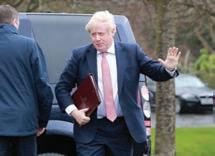
“So that is what Boris Johnson is more interested in. Covering up rather than helping people here to heal in helping victims, all victims and survivors to heal, and to allow them have some sort of closure.
“I think his proposals are ghastly and they are not going to serve reconciliation. They are certainly not going to serve truth and justice for the families, and that’s just one of his actions.
“In the last couple of days, he has also continued pandering to the DUP. He is actually facilitating the Executive not being established. He is threatening to override parts of the protocol, threatening to legislate to go against the rule of law, threatening to legislate to undo an international agreement. How anybody can do business with those people.”
Turning to the meeting with Boris Johnson, O’Neill said, “We had a very robust exchange with him. Myself, Mary Lou, and Conor Murphy were in that exchange. We put it to him directly that they are pandering to the DUP, that they are actively preventing the formation of an Executive. We put it to him that they are playing a game of chicken with the EU in an ideological war the Tories have with the European project. The North is caught out in the middle of all of that. And instead of sabre rattling, they should put their energies into actually trying to find an agreed way to make the protocol work. We put all that directly to him as you would expect.

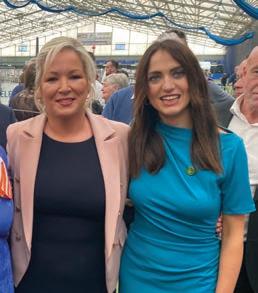
“He is here to say that on one hand that they are here to protect the Good Friday Agreement, but their actions have everything to do with undermining the Good Friday Agreement. Their behaviour is just themselves above all else, themselves above everybody else. It is about an English agenda as opposed to anything else.”
Turning to the role of the DUP in all of this, O’Neill said, “We have had a meeting with the DUP since the election, but the DUP are playing for time. They are playing a game and holding society to ransom”.
We asked about Sinn Féin’s meetings with the Scottish First Minister Nicola Sturgeon. O’Neill responded that:
“In the aftermath of both of our recent election results, we want to advance an already strong relationship that we enjoy with the SNP and Nicola and we want to work together in the time ahead. It is an important relationship in terms of where we are headed. I think that there is no doubt that Scotland are going to have their independence referendum again at some point. We are pushing ahead in wanting to see our unity referendum. I think we have a lot to share and learn from each other.
“I think Brexit has been a catalyst for a lot of conversations and a lot of change, and I think that the conversation that’s underway here around constitutional change and unity is just growing, growing, growing every day. You see it all around you. At times you look at Scotland and wonder will they have their referendum first or will we have ours first. Given that they have been here before, there is a lot to be learned from that.”
The case for a citizens’ assembly has been a Sinn Féin priority.
O’Neill told us that, “In every engagement with the Dublin Government, we make that point”, and “They get very sensitive about unionist opinion”.
“The space that we are in now it is reckless not to plan. They say they will get there, but it needs to happen now. When you look what happened with Brexit, when people were asked to vote on a question not having the full information. Look at the mess of the economy in Britain now.
“That’s actually what is wrong at the heart of the protocol with the Tories. They can see that the protocol has given us economic advantage, and the all-island economy is flourishing. That exposes what they have done in terms of wrecking their own economy in Britain, around what Brexit means to them.
“It is the responsible thing to plan now so we have the information. It is imperative to have this information. They should not be delaying. They should be getting on with it now. It should be happening now, because there are a lot of conversations to be had. What does the health service look like? What does the economy look like? What does education look like? We have to have all of these conversations so people can make informed decisions when the referendum does come about.”
What would a Sinn Féin First Minister be like? An Phoblacht asked Michelle O’Neill what themes and actions would she prioritise when the Executive is restored.
“I made the case throughout the campaign that I wanted to be a first minister for all, and that means I have to live up to that promise. I intend to live up to that promise because there is far more in society that unites us than divides us.
“To be a First Minister for all means that you have to reach out to everybody. You have to step outside your own comfort zone and lead from the front. I intend to do that. I will do it with my every word and deed. I have been a Minister for Health. I have been a Minister for Agriculture. I have been the Deputy First minister. Anything I have ever done in any of those leadership roles has been in the interest of what’s good for all people, never what’s good for one over another. I think that needs to follow through. I think that I demonstrate that to those that come from a British identity, newcomer people, people that have made Ireland their home. I think it is important that they know that I am there for all of them also.
“I would like to do more work to ensure that those from the Black and ethnic minority communities feel that this is their home, that they are valued and have a part in all of this. I think that is really important”.
O’Neill stressed that she wanted to be “naturally out there with
the people”. She said that, “When you take on a leadership position it has to be to do something and I certainly want to be a First Minister who is of the people and for the people. I think that is really important.
“I don’t seek to hold a leadership role or political office for myself. It is about what you can do for people. It is about how you can advance things. It is ultimately for me about uniting the country and about uniting the people. I think there is no contradiction in wanting to pursue all of my political aspirations, whilst also understanding others, and being able to find a way forward that lets us all chart a path together.”
“I think it is the fact that from the very formation of the state there has never been a nationalist, republican First Minister for all, a leader for all. People understood that. That was in their head. They understood that it was about change that demonstrated a way of change.
“I think people took ownership of that. They were tired of those within the leadership of political Unionism blocking equality, blocking of people’s rights, blocking progressive politics people want. The public were saying to us make politics work. They want politics to work. They want politicians to work together. They want us to do our best for them, but they also knew that this election result demonstrated that real change.”
Focusing on the result in the context of the Good Friday Agreement and the very first Assembly elections, O’Neill said, “That was a historic time. Here we are 24 years later. Democracy is being denied. The DUP pulled the show down. The public had enough of that approach. They want the mandate that they have given us now respected. That is what I hear back from the public.”

We asked Michelle about the Sinn Féin Assembly team and the 27 newly elected MLAs.
“I was very excited because they are all activists, MLA activists and they are all grass roots people who are determined to do their best. If there is one thing about our team it is that we will work hard for people. I am excited about the team because you have a mixture of experience, or new people coming in. We have the strongest female team.
“It is a very strong team on many fronts, all capable people, and I am very proud to lead them into the Assembly. We also know that we have a lot of work to do and I am confident that those MLA activists are going to make a difference to people, which is ultimately what we are trying to do.”
It was serendipity that voters in the Assembly elections went to the polls on the 41st anniversary of Bobby Sands death on hunger strike in 1981. The historic vote saw Sinn Féin emerge as the largest party in terms of first preferences and seats won and party Vice-President Michelle O’Neill will be the new First Minister.
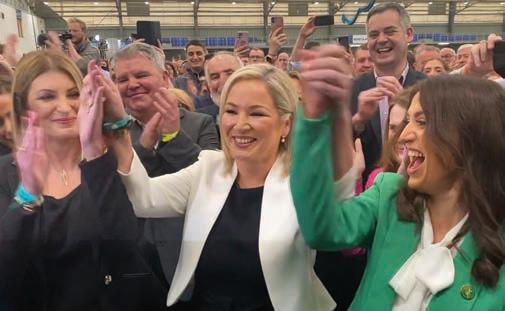
To reflect on the momentousness of the election result, we have contributions from JIM GIBNEY,
Jim is a veteran republican activist from the early 1970s to the present day and he reflects on this journey in his article. Naoise is a 24-year-old activist from North Belfast and contemplates the election from this perspective. Finally, Emma McArdle, another young republican as well as a Sinn Féin campaign and policy manager, reports from out on the canvas leading up to the historic vote.
anphoblacht
When the news spectacularly confirmed that Michelle O’Neill was to be the North’s First Minister, I went to the republican graves in Milltown Cemetery in Belfast.
On such momentous occasions, I find my self needing to be in the company of those I knew, particularly from the Short Strand, who were in the IRA and who died young, long before their time – for the freedom of Ireland.
The last time I journeyed emotionally like this to my youth was the day the IRA called its ceasefire in August 1994.
Then, as now, I wanted to be still in the memory of those I played with on the streets of the Short Strand, as a boy in short trou sers, and who died on those streets – barely out of short trousers themselves.
Then as now, I ran my fingers over the engraved names of the Volunteers on the



County Antrim monument and recalled their youthful faces.
Then as now, I thought of those IRA Vol unteers I knew from outside the district, whose lives were cut short for the freedom of Ireland.
Then as now, I thought of the time I visit ed the hunger strikers in the prison hospital or spent time with in Long Kesh and Crumlin Road gaol. I stood at the graves of Bobby, Joe, and Kieran and recalled the year of ’81 – a hunger strike that changed everything and came to define the selflessness and de termination of a generation and its succes sors in young Sinn Féin.
I thought of those friends of mine who lost loved ones, killed by the British Crown forces and loyalists, and those families I know who lost loved ones at the hands of the IRA.
� The people of Ireland and particularly the people of the North, on all sides, have paid heavily for the disaster of Partition
I thought of those Sinn Féin elected rep resentatives shot dead and injured – the e custodians of the people’s democratic right to not only vote, but to vote for a par ty campaigning for Ireland’s freedom.


I thought too of all those who died in the conflict and their families and the reality that grief knows no boundaries no matter the cause, no matter the uniform.
I thought of those from the Short Strand who spent years on the blanket protest, in
three Sinn Féin councillors, Joe and Mairead O'Donnell and Niall O Donnghaile, who re spectively held posts as mayor and dep uty mayor of Belfast and Seanadoir in the Oireachtas.

The people of Ireland and particularly the people of the North, on all sides, have paid heavily for the disaster of Partition. The violent character of an Orange state given untrammelled power displayed itself imme diately and often. None more so than on the streets of the Short Strand/Ballymacarrett area.
And at ceremonies a few weeks ago, I was reminded of that nascent and brutal state violence. The National Graves Association engraved a new name on its County Antrim Memorial, that of Volunteer John Walker, and Gerry Kelly MLA unveiled a memorial at the Garden of Remembrance in the Short Strand to this Volunteer.
He was 16 years old when, in April 1922, he was defending the people of Ballymacar rett area from one of many armed attacks on them by the armed forces of the state – Brit ish and unionist.
He was shot dead during a sustained three day siege of terror in the district during which several people, men, women, and children, were killed and injured. Gun men, in uniform and civilian dress, roamed the district in daylight, strafing the streets with gunfire, shooting and bombing civil ians on sight while ransacking homes.

jails in Ireland and England, lived their lives ‘on the run’ from their families, and those who were maimed for life and injured in the conflict.
And I thought out of this resistance the people remained steadfast and elected
In the 18 month period between July 1920 and Oct 1922, 700 people across the North died as the Unionist government consoli dated its grip on the Six Counties using in ternment without trial, curfews and an orgy of state killings. 500 were killed in Belfast –over 300 of them Catholics.
And during this state-led pogrom, 34 people from the Short Strand were killed and over 70 were injured in a community of 8,000 people who were largely defenceless as the Free State had gone its own way and
Since partition, nationalists faced overwhelming odds in their opposition to the all-powerful unionist regime, which casually used its formidable power – military, political and economic – to dominate and control the lives of the nationalist people�
had a vision of a United Ireland.

State terror did not deter them.
At times, nationalists opposed the state peacefully and at times, re publicans organised armed cam paigns against it. was clear was that the na tionalist people of the North would acquiesce to one-party Unionist control over their daily lives. It took 100 years of opposition by national ists to effectively end Unionist con
It became clear with Bobby Sands’ victory in Fermanagh and South Tyrone, with the Sinn Féin voice emerging in the councils in the 1980s and 1990s. All leading up to the truly historic victory last Thursday 5 May in the Assembly elections when Sinn Féin commanded a quarter of a million votes, elected 27 MLAs and a republican was entitled to become
Two republicans who would have really enjoyed the sensational results are Martin McGuinness and Bobby Storey. It could not have happened without their outstanding leadership.
In the course of the election cam paign, Sinn Féin President Mary Lou t the mood when she said that there was no post in the land not available to everyone.
It dovetailed in to the momentum generated behind the ‘one big idea’ of the election – a Sinn Féin First
was bloodily pursuing the IRA and Cumann na mBan, upholders of the 1916 Republic.
100 years after he was shot dead, John Walker was remembered by his family and a community who did not know him, but knew enough about him to pay respect to him for his bravery in the face of overwhelming odds.
Since Partition, nationalists faced over whelming odds in their opposition to the all-powerful Unionist regime, which casually used its formidable power – military, political and economic – to dominate and control the lives of the nationalist people.
It would have been understandable had the nationalist people succumbed to the re lentless military and political aggression of the Unionist sectarian state.
Many emigrated, were driven out in large numbers and made up over two-thirds of the total who left for places like North America.
Those who remained would passively re sist the humiliations, awaiting justice. They
It was stunning, hypnotic to watch as Unionist misrule in the form of the DUP collapsed and Sinn Féin and the Alliance Party consol idated and expanded support for tioning power-sharing Executive and Assembly within the
all-Ireland framework of the Good Friday Agreement.


The election result reflects the changed society based on power sharing, equality, and respect which slowly emerged from the politics of the Good Friday Agreement.
The DUP supported Conservative Party right-wingers for the hardest Brexit possi ble on the basis that leaving the EU would increase the gulf between the North and the South, both of which have been moving closer together as a result of the peace pro cess and the Good Friday Agreement.
Brexit and its imposition on the people of the North, who voted against it, accelerat ed the demise of the Unionist parties, and brought centre stage the age-old aspiration of a United Ireland.
And at the heart of that demise was the determination of the nationalist people of the North – a 100 year old determination, which could be encapsulated in the title of Gerry Adams’ last book, ‘Never Give Up’.
It was reflected in the quiet determina tion of Alice Keenan, now in her 93rd year. She was born seven years after Partition and endured discrimination in employ ment, housing and British and Unionist violence.
It didn’t break her. And there she was smiling on her way to the polling station, with a walking stick in one hand and her Irish passport and voting card in the other, going to claim her ballot paper, going to vote and elect, Michelle O’Neill, as a First Minis ter for all. •

Jim Gibney is a republican activist and former political prisoner
� Two republicans who would have really enjoyed the sensational results are Martin McGuinness and Bobby Storey. It could not have happened without their outstanding leadership




NAOISE Ó CUILÍN is a 24-year-old North Belfast republican from New Lodge. Here, he gives an impression of the Sinn Féin election result from the view of a young activist.
The results of the Assembly elections are nothing short of his toric. Sinn Féin emerging as the largest party marks a shift in the politics of the North and presents a major catalyst for Irish Unity.

While you can’t predict the future and the practical implica tions of the results are yet to be seen, the feeling surrounding the results cannot be underestimated.
A quarter of a million people, almost 30% of voters, rallied behind a party whose raison d’être is Irish Unity. Northern nationalists are realising that Sinn Féin can and will drive the mobilisation to end Partition. The impossible is beginning to become the possible.
Sinn Féin also gained support outside of their traditional support base, which demonstrates that there are those outside of nationalism who realise that their future is not best served
by a British government in Westminster, but by people in Ire land.
Young people and those living outside of the North need to understand that what happened at the weekend was never meant to happen.
James Craig, the first Prime Minister for the Northern state, referred to Stormont as a ‘Protestant parliament for a Protes tant people’ with Belfast becoming the ‘new impregnable Pale’. An in-built Unionist majority was created to prevent Unionism from ever losing power.
Northern nationalists after the Anglo-Irish treaty were left to the whim of a sectarian and aggressive Orange state that op pressed the minority to the extent that the apartheid regime in South Africa was envious of it. Therefore, it is not surprising that many in the older generation were emotional seeing the re
�






Sinn Féin can and will drive the mobilisation to end Partition, the impossible is beginning to become the possible

sults filter through. Older generations remember living through a time when thousands of British troops saturated our areas, taking over schools, tower blocks, houses, and sports pitches.
Those foreign soldiers, along with the now tarnished RUC, harassed and brutalised people on a daily basis while loyalist murder gangs roamed at will, often with the blessing or involve ment of British crown forces.
Many resisted and no matter how much the British state threw at them, they remained resolute and committed, un bowed and unbroken. Many experts predicted that Sinn Féin would lose seats, they were wrong. Sinn Féin not only increased their vote in traditional republican areas but in other areas as well.
People heard the clear positive message expressed by Sinn Féin – more money into the health service, a radical approach to the housing crisis and tackling the rising cost of living.

The DUP also galvanised the Sinn Féin vote. Their arrogance in refusing to clarify whether they would serve with a Sinn Féin First Minister resulted in northern nationalists wanting to send them a message - gone are the days of an Orange State.
These were not the only factors explaining Sinn Féin’s suc cess as the party has a long history of grassroots activism and delivery. Sinn Féin has built a solid base of support in many working-class areas over the last number of decades.

Grassroots activism and organisation was the strategy ad opted by republican prisoners returning to local communities. They established youth clubs, schools, Irish language groups, community groups, advice centres, housing action committees and more. Other political parties in the North envy Sinn Féin’s
support base and the dedication of their activists.
Over the last number of years, Sinn Féin, as members of the North’s executive, have delivered on major proj ects that have benefited ordinary people. This includes capital investments into sporting and leisure facilities, supporting the growing Irish-medium sector, delivering the biggest shake-up to the housing system and using their positions in Stormont as the last lines of defence against Tory austerity, protecting the most vulnerable in society.
More and more people in the North are realising the potential for radical change with Irish Unity. It provides our best chance as a people to create a better future for Irish citizens, both North and South, a blank canvas.
The artificial and sectarian carve up of our country has resulted in two failed statelets, which have done nothing but solidify the position of the elite on both sides of the border.
A United Ireland is not simply about getting the ‘Brits out’ or achieving some nationalistic relic of ‘old Ireland’. It’s about giving the Irish people, for the first time in history as a singular unit, the opportunity to decide its fate without inter ference from another state.
A United Ireland provides our best chance at combating in equality, tackling the climate crisis, creating a fairer economic system and healing the wounds and divisions of the past that have been ‘carefully fostered by an alien government’.
A country where families aren’t struggling to make ends meet, where they are not choosing between eating and heat ing, and where young people don’t feel forced to emigrate to make a better life for themselves.
Stormont can only bring a degree of change and mitigate the worst of Tory austerity. Democracy and economic justice can never be a reality in Ireland so long as Westminster retains economic powers over the North and establishment parties protect their class interests in the 26 Counties.
That is why the Southern political establishment fear a Unit ed Ireland. It is a threat to their class interests and it will bring a new democratic reality to Irish politics with the inclusion of Northern citizens, including those from a Unionist tradition.
Young people are becoming more and more attracted to republican ideals and it is always young people who drive change. I hear frequently from older activists that there has not been better time to be a republican. I truly believe that to be the case. •
MÁIRE DRUMMWe must take no steps backward, our steps must be forward…
�A United Ireland provides our best chance at combating inequality, tackling the climate crisis, creating a fairer economic system and healing the wounds and divisions of the past
These were the sentiments on the doors I visited in South Armagh and I know words to this effect were being spoken all across the North in the weeks preceding the Assembly election.
The hope, positivity, and buoyancy of the nationalist electorate is difficult to capture in words, but there was a collective recogni tion that this had the potential to be a water shed election.
And when the votes were being counted on 6 May, it quickly became clear that this indeed would be recorded as a seminal mo ment in Irish politics.
In the days following the election, well-wishers spoke of a collective achieve ment. It wasn’t a case of ‘yous did well’, it was ‘we did well’.
And while some of the media spoke about Sinn Féin’s ‘victory’, the sense I got was not of a victorious electorate which had beaten its rivals, but a confident one.

The people who have put their faith in Mi chelle O’Neill to lead the Executive are confident that she will be a leader for everyone, someone who will work to enhance quality of life for everyone, regardless of their consti tutional preference or background.
I also think that a proportion of the peo ple who didn’t vote for Sinn Féin also believe, despite not supporting the party, that Mi chelle O’Neill will be a progressive, fair, and capable First Minister.
That is not to underestimate the reserva tions of those from a Unionist background or to minimise the discomfort this section of our community might feel regarding a republican First Minister. The legacy of the past remains unresolved and there is much work to be done to heal our community, but that is for another article.
In the immediate term, delivering for the people of the North means dealing with the current cost of living emergency, enhancing healthcare, and ensuring the island econo my is protected from the impact of Brexit.
Sinn Féin has proposals to address these
and all of the other issues affecting citizens in the North. Of course, the fact that the DUP, shamefully aided by the Johnston govern ment, is blocking the formation of the Exec utive, means that these proposals cannot be implemented.
So, in the short term, the establishment of an Executive and Assembly which delivers must be the first priority. However, in order to make an enduring difference to the life chances and experiences of the people who live in the North and positively impact on the whole island population,
a lasting, democratic solution must be sought. It is not enough to make ‘Northern Ireland’ work.
This fundamental solution can only be brought about through constitutional change. The ability to do so is guaranteed by the Good Friday Agreement through the ref erendum mechanism.
A period of structured planning for the new United Ireland must now begin. The Irish government needs to lead the way on this and convene an all-island citizens’ assem bly. The Irish government also needs to de
“I THINK WE’LL DO IT THIS TIME” “IT’S OUR BEST CHANCE IN A LIFETIME” “I’LL DEFINITELY BE OUT FOR YOU THIS TIME” “THIS IS THE BIG ONE”• Conor Murphy, Liz Kimmins and Cathal Boylan are elected for Newry and Armagh after topping the poll
In the days following the election, well-wishers spoke of a collective achievement. It wasn’t a case of ‘yous did well’, it was ‘we did well’
mand that the British government indicates a future date for the referendums to take place.
At some point, and I hope the day comes sooner rather than later, I believe the DUP will go back to Stormont. There isn’t much of a future for them in a direct rule scenario, and the rest of the parties and citizens North and South would also rightly be vehemently opposed to this.
The fact remains however, even with a fully functioning Executive and an Assem bly full of members doing their best for their constituents, until the influence of the British government is removed from the North, neither citizens nor politicians have the pow er to introduce the change that is required.
There are many policy areas which are not devolved to the Assembly; finance, foreign
affairs, social protection, and investigations into killings which occurred during the con flict are all key areas which impact on people’s lives and over which the Assembly has limited jurisdiction.
The North does not have adequate fiscal control. There are a whole raft of complex fiscal rules which impede the Executive from developing bespoke fiscal responses for the challenges and opportunities which exist in the North.
The preclusion of the Executive to man age its own money impacts on every other aspect of policy development. Addressing the current crisis in healthcare, providing adequate and appropriate education, and saving people from the Tories’ brutal cuts to social protection can only be done on the solid foundation that Irish Unity, incorporat
ing self-determination, can provide.
Moreover, the planning that is required for the fullest development of the econo my, healthcare, climate change, tourism, and other areas must be all island in nature.
Particularly in the planning and delivery of healthcare, the island of Ireland has the criti cal mass necessary to develop the workforce and specialisms that our citizens need, two separate jurisdictions do not.
Delivering in the here and now and plan ning for a new united Ireland are two sides of the same coin. Success in both objectives will be the legacy of this historic election –time will tell if it really was ‘the big one’. •
Emma McArdle is a Campaign and Policy Manager on Sinn Féin’s Uniting Ireland project.
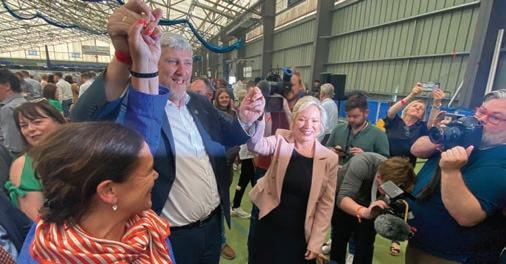
1st Pref Votes: 1,369
Eliminated 8
1st Pref Votes: 8,395
Elected 1
Carál
1st Pref Votes: 7,932
Elected 1
1st Pref Votes: 9,511
Elected 1
1st Pref Votes: 9,011 Elected 1
Órlaithí Flynn
1st Pref Votes: 6,743
Elected 10 Pat Sheehan
1st Pref Votes: 6,373 Elected 11
1st Pref Votes: 5,681 Elected 11
1st Pref Votes: 3,675
Eliminated 4
1st Pref Votes: 6,868
Elected 10 Kathleen McGurk
1st Pref Votes: 4,500
Eliminated 10
1st Pref Votes: 9,067
Elected 1 Colm
1st Pref Votes: 7,562
Elected 8 Áine Murphy
1st Pref Votes: 7,379
Elected 8
1st Pref Votes: 9,471
Elected 1
Ciara Ferguson
1st Pref Votes:
Pref Votes:
1st Pref Votes: 10,845
1st Pref Votes:
Dillon
1st Pref Votes:
1st Pref Votes:
Pref Votes:
Votes:
““You know we’re flying here, don’t ya?!” whispered one of my oldest friends and comrades, Packy Leonard, as we were tallying the South Belfast boxes at the recent Assembly election count.
I nodded, having realised that the indications were posi tive and that Deirdre Hargey was on course to at least match the 7,000 plus votes that Máírtín Ó Muilleoir had received in 2017.
What had particularly raised my expectation was firstly the obvious increase in transfers coming to Deirdre and, more importantly, the notable smattering of first preference votes in boxes which I knew were from traditionally Unionist areas.
That was remarkable and helped ensure that Deirdre would


not just match our 2017 vote, but in fact add an extra 2,000 votes on to our tally.
However, the big story of the Assembly election was Sinn Féin winning the most first preference votes and seats, thus democratically entitling Michelle O’Neill to the position of First Minister.
As one BBC correspondent put it, this was never meant to happen. Since the election, I have heard a raft of anecdotes about voters from a Unionist background declaring to our representatives that they had voted Sinn Féin for the first time, either as their first choice or as a preference. When First Minister designate Michelle O’Neill attended the Balmoral Show in the
When First Minister designate Michelle O’Neill attended the Balmoral Show in the days after the election, she was swamped by people of all persuasions who wanted to express their good wishes
In the aftermath of an indifferent performance by Unionism of all shades in the Assembly elections, CONOR KEENAN floats the potential of positive and progressive forces within the Unionist community emerging to bring about a different future for the North
days after the election, she was swamped by people of all persuasions who wanted to express their good wishes.
I experienced this at first hand myself when I attended an event at an East Belfast church last week. I was struck by the openness and healthy curiosity which the attendees displayed when discussing the future of this place we all call home. Afterwards, one lady did indeed declare to me that she had given her vote to Sinn Féin for the first time. Of course, none of this can be overstated or taken for granted.
The brand of political Unionism represented by the DUP now effectively holds the Good Friday Agreement political institutions to ransom through their refusal to appoint a Speaker and convene the Executive.
Incredibly, it now appears to have again placed its trust in British Prime Minister Boris Johnson to breach international law through unilateral action on the Brexit Protocol, to remove the ‘Irish Sea Border’.
The irony is not lost on anyone, except themselves, that the DUP, having campaigned for the hardest Brexit possible, now finds itself victim of its own political machinations.
At present, Jeffrey Donaldson has the impossible task of leading the DUP from within while Jim Allister and Jamie Bryson lead it from without.
The ‘Anti-Protocol’ rallies which were organised in the run up to the Assembly election provided a platform for the most extreme within Unionism. Speakers invoked the spirits of Carson and the 1914 Larne gun runners. The DUP played second fiddle to Jim Allister and, at some rallies, Mr Allister had to intervene to stop the crowd from booing the DUP speaker.
The leader of the Ulster Unionist Party, Doug Beattie, realised that the toxicity of these rallies could damage his party’s electoral potential and publicly announced that he would no longer be taking part. The DUP carried on.

There is a real danger in the time ahead that those who, having been attempting to heighten the political atmosphere, including those who planned the hoax bomb attack in the grounds of Holy Cross church back in March, could be prompted, with the influence of the rhetoric of the Anti-Protocol rallies ringing in their ears, to carry out further attacks.
As we in the North, and Belfast in particular, face the prospect of the first full marching season in three years, the potential exists for a difficult few months. Without a complete turnaround, it is difficult to see how the DUP can come off the hook it has placed itself on.
This would mean a prolonged period of political stasis and the opening up of a dangerous vacuum. Jeffrey Donaldson and the rest of the DUP leadership know this.
It reminds me of the Sandra Bullock movie ‘Premonition’, where the lead character wakes up each morning to witness the same car crash time and time again until she can figure out a way of breaking the cycle.
In Jeffrey Donaldson’s case however, he has exited the driver’s seat and left the door wide open for someone else to jump in and slam the brakes.
I have every faith that the positive and progressive forces within the Unionist community will accept that challenge. •
The DUP, having campaigned for the hardest Brexit possible, now finds itself victim of its own political machinations• ANOTHER POLL TOPPER: Deirdre Hargey is congratulated on her remarkable result in Belfast South
The scale of the cost of living crisis across the whole of Ireland is addressed by Sinn Féin TD CLAIRE KERRANE, who reports on Sinn Féin’s recent survey completed by 10,000 respondents. She highlights the Coalition government’s inaction and complacency, as well as the implications for cash strapped families in the North because of the DUP stalling on forming the Executive.

We are in the midst of a cost of living crisis. Households everywhere are facing financial challenges as fuel and energy costs soar and rents and childcare costs remain eye-wateringly high.
Headlines and reports on the rapidly rising cost of living are not new, and Sinn Féin have been sounding the alarm for months about the need to support families and workers. However, the effect that spiralling fuel costs are now having on households is incredibly concerning and compounds the cost of living issues we have been seeing over the past year.
There have been more than 35 different price increase announcements from energy suppliers since the start of 2021, and these have continued to mount in the first half of 2022. Providers across the island have recently announced price hikes of up to 30% for electricity and up to 39% for gas, which took effect from April.
In the last few months alone, Energia,
Bord Gáis, Electric Ireland, SSE Airtricity and Flogas have all announced price increases – some of which commenced alongside the increase in Carbon Tax on 1 May. This is at a time when energy prices are already at an all-time high for households. Customers have seen price increase after price increase and are struggling to keep on top of these costs.
Sinn Féin have been raising and responding to this issue for over a year
now. I tabled a motion addressing fuel poverty in the Dáil in February 2021, but it is clear the crisis has accelerated since then.
In March, Sinn Féin carried out a survey on rising fuel costs that received over 10,000 responses and some 6,000 comments. The survey results starkly illustrated the gravity of the cost of living crisis and the pressures that families and workers are experiencing. The stories shared are shocking and, in many cases, heart breaking.
A staggering 89% of respondents to our survey said that increased costs have impacted on their ability to get to work or to do other necessary activities for their families. We heard from a family, who shared how their child has cancer and is undergoing chemotherapy. They need to take her to her hospital appointments by car, because her immune system is too vulnerable to take public transport. Their

The party received 9,000 plus responses. Below is just a small snap shot of the comments included in the survey.
We don’t have enough for us all to eat, pay mortgage, childcare, fuel, heating oil. We don’t have money to do fun things with our child.
There have been more than 35 different price increase announcements from energy suppliers since the start of 2021
� It is to the point where I have to make a choice either my child eats or I eat.
fuel costs have doubled in recent months and they are struggling to afford the costs of travelling to these vital hospital appointments.
A stark figure of 94% of people said they are turning on their heating less often due to soaring costs. One single mother spoke of how she was sitting in a freezing cold house with a sick eight month old baby. Students reported being unable to go to classes or apprenticeships because they cannot afford petrol or diesel costs. Pensioners also spoke of feeling terrified their pension can’t keep up with utility costs. This should not be happening.
Soaring fuel costs are also having a knock-on effect and exacerbating the cost of living crisis in other areas. 86% of respondents said that they have had to cut back on essential items such as groceries, due to fuel price hikes.


I’m going hungry tonight so I can feed my child and heat our house. I cannot afford anything anymore.
We heard of appalling situations where people are choosing between heating and eating. One person told us that they work full time but are struggling with increasing bills. They had reduced their own meals, to ensure their child could eat and to allow them to turn the heating on. That families and workers are ‘choosing’ to eat less, because that is the only expenditure they can cut back on, is simply unacceptable.
These are only a few examples of the thousands of stories shared with me. While

fuel costs continue to rise, households will continue to be placed under increasing pressure over the coming months.

Fuel costs are out of control and people need help. Across the island, Sinn Féin have brought forward measures to support households. We have been pushing for effective action and have faced institutional and political hurdles in bringing these supports forward.
As Communities Minister in the Executive, my colleague Deirdre Hargey MLA allocated £120 million to help people pay their energy bills. In March, Deirdre requested further funding from the Department of Finance to support workers and families facing these massive energy price increases. While it has been indicated that the funding is available, it currently cannot be unlocked since it requires the agreement of the Executive. As the
I work full time. My salary is 30k and I’m really struggling. The government don’t care about the working class people and they never will.
I work with the elderly and it’s just heartbreaking to hear all of them say they don’t know how they are going to heat themselves. Now some of them are resorting to wearing their coats and scarves at home or going to bed for much of the day just to keep warm. It’s a disgrace in 2022 that is the way we are living now.
Across the island, Sinn Féin have brought forward measures to support households
With the next fuel allowance subsidy, I can’t even order oil because they need a minimum payment of €250. I will have to get drums and ask my landlord to pour them in because I physically can’t.
�I’m 20 years old. I drive an hour both ways to work every day. I sleep in my car Friday nights to make it easier to do overtime on a Saturday. The rent is too high and the first chance I get to get out of this country, I’ll take it and I’m not only young person to feel this way. Thanks for nothing.
• The effect that spiralling fuel costs are now having on households is incredibly concerning and compounds the cost of living issues we have been seeing over the past year
Executive is currently non-functioning due to the actions of the DUP, emergency meetings to get this financial support out to those who need it will be required.
Across my own work on the cost of living, I am seeing inaction and complacency from the Government. Just weeks ago, I proposed a suite of measures in the Oireachtas to ease the pressure of rising fuel costs on households. These included the introduction of a ‘cost of living cash payment’ of €200 for every adult with an income less than €30,000 and €100 for every adult with an income between €30,000 and €60,000.
Sinn Féin continued our call for the cancellation of the scheduled Carbon Tax increase in May, which was the wrong call at the wrong time We also proposed a further reduction of excise duty on petrol and diesel and the removal of the excise duty on home heating oil for a temporary period. These proposals were voted down by the Government.
We have gone to bed cold to save oil.
We reiterated our calls on the Government to establish a Discretionary Fund to support households who are struggling with utility debt, a proposal we first put forward fourteen months ago in a Dáil Motion. We also need to see the Fuel Allowance extended to those in receipt of the Working Family Payment, which is a payment provided to low-income working households.
Yet, these proposals have fallen on deaf ears in Government at a time when people need support the most. The Government has so far refused to listen to the calls of Sinn Féin, despite our calls being backed by the findings of leading organisations working in the area.
As an example of this, the Society of St Vincent De Paul (SVP) have reported that the number of people struggling financially has doubled since 2020. While we know there are global influences which are affecting the price of fuel, further measures must be put in place to ensure

households can stay on top of spiralling heating and utility bills. The Government cannot do everything, but they can and should do more.
The latest price increases kicked from April, and the Government chose to proceed with the Carbon Tax increase on 1 May. The additional €100 payment for Fuel Allowance recipients announced this week is welcome, but all other households who are locked out of the payment are left without further supports. People are being pushed to breaking point and will simply be unable to afford their energy bills and heat their homes.
The Government under Fine Gael and Fianna Fáil are out of touch and don’t appear to understand the reality that households are experiencing. To underline this crisis, I delivered hundreds of the stories shared through our survey to Taoiseach Micheál Martin directly to make sure that he can see the calls for help from families and workers for himself.
Now is not the time to play political football at a time when families and workers are suffering. It is evident that we need to see supports that reflect the scale of this crisis. Sinn Féin will continue to work to deliver cost of living supports to households across the island. •
My heating is included in my rent but my electricity is so high now I cook less and shower every 3 days where as before I showered every day. I also only use the washing machine once a week now. I find it very stressful. I’m a pensioner now and didn’t think this is where it would end up.

Claire Kerrane is the Sinn Féin TD for Roscommon-Galway and spokesperson for Social Protection & Rural Development
I have to choose between heating or food or bills each week. It’s getting worse.
As Communities Minister in the Executive, my colleague Deirdre Hargey MLA, allocated £120 million to help people pay their energy bills
The ongoing tragedy and humanitarian crisis caused by Russia’s invasion of Ukraine is still dominating our news media in Ireland and internationally. In this article, CHRIS HAZARD makes a personal analysis of other issues raised by the conflict, including the implications of an increasingly militarised Europe and the need for ‘a security architecture that prioritises peace, social justice, and recognises the sovereignty of small nations and their right to peacefully determine their own future’.

“Neo-colonialism remains invisible to us. When Crimea is annexed, we understand it: soldiers, guns - classic…but ‘independence’ on IMF loans that our children and their children won’t be able to pay back; Carpathian trees becoming IKEA chairs; the aspiration to join the imperial military bloc NATO written into the Constitution of our sovereign state - none of this alarms us…this is our ‘European integration’ - to pimp our Motherland to the highest bidder.”
These are the words of Anatoli Ulyanov, the prominent Ukrainian artist attacked for his opposition to far-right Ukrainian nationalism and defence of LGBTQ rights and now living in exile in the United States of America.
Ulyanov’s writings, his life experiences, and his considered re flections shine a light into the fog of the Ukrainian conflict. Having grown up in a Soviet, Russian-speaking family, he is a fierce critic of Vladimir Putin’s regime, and so he should be. Putin is the head of the Russian gangster class; those parasitic oligarchs who pil fered the vast public wealth created by the Russian working class over many decades of toil and labour.
But Ulyanov is also acutely aware of the vice-like grip Russia has on his homeland. An historic post-Soviet state reduced to a colonial enclave, Ukraine has been trapped in a perpetual conflict between Russian and pro-western capitalists since the collapse of the USSR.
Putin’s annexation of Crimea in 2014 turned the dial significant ly. Now, the logic of Russian imperialism relegates the economic imperative of capital accumulation in favour of a much more visceral hunger for the restoration of security and pride for the Russian state, for the rebuilding of the Tsarist Russian empire.
There is no doubt then that Ukraine, birthplace of the Rus and so of Novorossiya, is central to Putin’s plans for imperial expan sion.
If Putin’s 2014 assault on Crimea was relatively straightforward, his recent full-scale attack on Ukraine already looks to have been a serious strategic error. Not only do Russian troops appear bogged down in a long, expensive war of attrition, but Putin has single-
handedly gifted NATO with its greatest PR victory in decades. With Russia increasingly isolated, Finland and Sweden now look certain to join the US-led military alliance.
Putin has launched his attack on Ukraine he says to ‘protect the vulnerable’ minority in Donbas and to ‘free’ all Ukrainians from the yoke of the new Hitlers who rule them. The imperialist propaganda
Putin’s troops bombarding Mariupol and Kharkiv are no liberators; just as Bush’s bombs over Baghdad and NATO’s annihilation of Libya failed to liberate a single soul

sounds all too depressingly familiar. Putin’s troops bombarding Mariupol and Kharkiv are no liberators; just as Bush’s bombs over Baghdad and NATO’s annihilation of Libya failed to liberate a single soul.
In Russia, more than 14,000 courageous anti-war protestors in over 100 different cities have taken to the streets to demand an end to Putin’s aggression. They’ve been imprisoned in their thousands; many tortured, most of them unlikely to be released anytime soon. They are condemned as “agents of western imperi alism”.
Their courageous call for peace is a beacon for progressive forc-
es across Europe to also come onto the streets and demand an end to this war.

A rising wave of militaristic jingoism has swept over much of the global north. Peace activists are instead slandered as “stooges” and painted as “Putin’s puppets” by establishment forces, but we must not be defeated. We must join forces with peace and social movements across Europe to stop this war.
Progressive forces must raise our voice for de-escalation - we must drown out the irrational, confrontational rhetoric and threats of increased military action.
Whilst the eyes of the world appeared glued to the scenes in Ukraine, let us also raise our voices for those who shelter from aerial bombardment in Yemen, in Syria, in Somalia, and to the men, women, and children of Palestine who endure the brutal, repressive realities of life under the apartheid Israeli regime.

Be under no illusion; a failure to deescalate this crisis will lead Europe once again to the brink of wholesale conflict and will undoubtedly deliver more death, more destruction, and an even deeper humanitarian crisis.
Every war must end at some point and diplomacy must restart. Rather than allow this war to escalate and for positions to harden still further, it is vital that the guns fall silent and the discussions recommence.
The prospect of Europe sliding once again into the imperialist wars of the past is horrifying and must be actively opposed. How ever, the solution to this escalation of military violence is not more violence.
The solution is political, based on the principles of common, col lective security which protects the well-being of all peoples, and respect for human rights and international law.

A modern-day escalation in armed conflict, increased militari sation, and the spectre of nuclear war is a powerful reminder yet again of the need to build a genuine multipolar geopolitical world, where peace is not merely the absence of war, but the existence of social justice.
We urgently need a security architecture that prioritises peace, social justice, and recognises the sovereignty of small nations and their right to peacefully determine their own future.
Across Europe, it is clear that the ordinary people want an autonomous European security policy that dis mantles nuclear weapons, delivers demilitarisation, and nurtures peaceful diplomatic relations between neigh bouring states.
Following a decade of austerity, rising inequality, and stagnating living standards, the ordinary people of Eu rope want peace and social justice, but European political leaders are trapped in a deepening military-industrial complex.
Worsening the dynamic of escalation, the EU has eagerly transformed itself into a military bloc, pledging €500 million for military equipment for Ukraine. Nowhere is this change of pace more visible than Germany, where the government has committed €100 million in new military spending, and raising its defence budget above 2% of GDP for the first time since 1945.
This increase in military expenses,
• Rsing militaristic jingoism hasled to peace activistsbeen slandered as “stooges” and painted as “Putin’s puppets” by establishment forces, but we must not be defeated, we must stop this war
fuelled by the increased military tensions and war-mongering rhetoric is totally unacceptable as ordinary workers and families face into economic hardship yet again.
Valuable resources that could help eradicate growing inequali ties across Europe must not be spent on the prospect of a prolonged war - for as always, the unbearable costs of war are always paid by the working classes.
Speaking in 1914, James Connolly described war as “the most fearful crime of the centuries. In it the working class are sacri ficed that a small clique of rulers and armament makers may sate their lust for power and their greed for wealth!”

The arms industry must no longer en joy impunity, making billions in revenue while destroying our planet and depriving our unborn generations of their right to a peaceful future.
As we face the unstoppable march of climate breakdown and the stag nant symptoms of a decaying capital ist system, ordinary citizens demand that our collective energies are deployed positively in order to build a better world.
We must focus our energies on achieving climate goals, leading a socially just transition, rebuilding our fraternal relationship with the global South, and always prioritising peace and social justice. In the words of Anatoli Ulyanov: “We need to connect and fight the exploitation which holds us back, and the inequality that quells the full bloom of all human beings.”
Invasion, occupation, weapons and wars should belong to the past. The future of Europe, and humanity, must be peace! •
Rather than allow this war to escalate and for positions to harden still further, it is vital that the guns fall silent and the discussions recommence
As the attention of western world remains focused on the war in Ukraine and people in Ireland are daily horrified at the re sulting humanitarian crisis there, an other war, and what is currently the world’s greatest humanitarian crisis, is relatively ignored.
The poorest country in the Middle East has been bombed into the stone age by one of the richest, Saudi Ara bia. The relentless Saudi assault has already destroyed Yemen, inflicting appalling suffering on its people.

The conflict which has become a regional proxy war, led to 377,000 civilian deaths by the end of 2021 according to the United Nations De velopment Programme. These deaths are both directly related to the war and the resulting hunger and disease. An attack on a migrant detention centre earlier this year killed 90 people and wounded over 200.
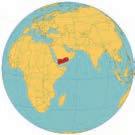

The war has also created a humanitarian crisis in Yemen. The UN has declared Yemen as the worst humanitarian crisis in the world today with more than 23 million people on the brink of starvation, and an estimated
ple, 80% of the Yemeni population, need humanitarian aid and protec tion.
The UN predicts 19 million Yemenis will go hungry in the coming months, while more than 160,000 of them will face famine-like conditions.
120,000 people displaced.
Yemen is now home to the largest and fastest growing cholera crisis ever docu mented. It is estimated that every 10 min utes, a Yemeni child under five years of age dies from starvation or disease.
The United Nations says 24.1 million peo

Reduced supplies of wheat from Ukraine caused by the current war there are likely to push hunger lev els in Yemen even higher. Despite attempts to end the stream of deadly and destructive modern weapons flowing to Saudi forces, western interests are profiting handsomely from this horrific war.
The origins of the conflict in Yemen were in the wave of revolts across the Arab world in 2011. It inspired an upris
YEMENing in Yemen against the local dictatorship of Ali Saleh. A deal that followed allowed Saleh’s deputy, Abd Rabbuh Mansur Hadi, to take power.

Subsequently, the Houthi religious move ment, which champions the Zaidi Shia Mus lim minority, launched its own rebellion against the government.
Having taken control of much of the north of the country, the Houthis advanced south towards Hadi’s stronghold. This alarmed the regime in Saudi Arabia which calculated that a Houthi-led Yemen would align itself to Iran - an important enemy of the Saudi regime.
In early 2014, the Houthis captured the na tion’s capital Sanaa, forcing President Hadi to flee abroad in March 2015. A Saudi-led coalition, backed by Britain and the United States, entered the fray the same year to try to restore the government to power.
Amnesty International and Human Rights Watch have documented coalition airstrikes that have repeatedly targeted schools, hos pitals, weddings, public markets, water and sanitation systems, and other vital civilian infrastructure – all probable war crimes.
The Saudi-led coalition has also been ac
cused of using starvation as a weapon of war by blockading and interfering with the deliv ery of vital humanitarian and commercial assistance, which the majority of Yemeni civilians depend on for survival.
Western powers have provided weapons, bombs, logistical support, facilitated the refuelling of coalition jets, and shared in telligence for Saudi targeting assistance in Yemen.
Outside forces have flooded the country with weapons to keep the conflict going for many years to come.
Iran has a clear interest in the conflict but denies arming the Houthis, despite claims from the United Nations and others, while the Houthis say their drones and missiles are domestically manufactured.
Meanwhile, the Houthis have signed what the UN has described as an “action plan” to end and prevent recruiting or using children in armed conflict, killing or maiming children and attacking schools and hospitals.
Despite the scale of destruction and the suffering being inflicted on Yemeni people in order to re-install a dictatorship, the Irish Government has ignored the atrocities in return for increased trade with Saudi Arabia.
In November, Tánaiste Leo Varadkar led a five-day Enterprise Ireland trade mission to the United Arab Emirates (UAE) and Saudi Arabia during which there is no record of him raising the issue of Saudi Arabia’s dismal do mestic human rights record or its actions in Yemen.
Varadkar invited a member of the Sau di Arabian government to visit Ireland and pledged to “deepen ties” with the totalitarian state, despite the country’s appalling abuse of human rights within its own bor ders and the atrocities it is perpetrating in Yemen.
Speaking in the Seanad, Sinn Féin Sena tor Paul Gavan condemned the Irish Government’s refusal to speak out against the dictatorship in Saudi Arabia for its seven year long war of terror on the people of Yemen.

Highlighting the role that Shannon Airport has played in the war, the Senator informed Minister for State Joe O’Brien that every US Military advisor helping to train Saudi pilots to drop bombs on Yemeni citizens has come through Shannon.
Gavan asked for an explanation as to why a Minister was in Saudi Arabia touting for more business even as the regime was pre paring to carry out 81 executions in one day and continuing its campaign of bombing in Yemen.
He called on the Minister to use Ireland’s seat at the UN Security Council to call for an end to the war, condemn Saudi aggression, and condemn arms sales by members of the EU, Britain and the US to Saudi Arabia and the United Arab Emirates (UAE).
A United Nations-brokered truce has been in place in Yemen since April 2, but has not always or universally held. Civilians are still dying and the UN has warned of a “worsen ing” humanitarian situation. •

The UN has declared Yemen as the worst humanitarian crisis in the world today with more than 23 million people on the brink of starvation• Ali Abdullah Saleh
Sinn Féin Senator Paul Gavan condemned the Irish Government’s refusal to speak out against the dictatorship in Saudi Arabia for its seven-year war of terror on the people of Yemen
On Wednesday 18 May, a Sinn Féin motion calling for the Dublin Government to secure full public ownership of the proposed site of the National Maternity Hospital site was passed in the Dáil. Below, we carry an edited version of Waterford Sinn Féin TD David Cullinane’s speech. David is the Sinn Féin spokesperson on Health and brought this motion before the Dáil.
to see a resourcing of the national maternity strategy. I want to see modern, fit-for-purpose maternity hospitals with modern, fit-for-purpose maternity suites for women right across this State. I want to see it for all women. I want to see investment in all of our maternity hospitals right across the State.
The Minister will be aware that while I accept Holles Street is not fit for purpose, and while some of the comments about the state of Holles Street may have been exaggerated, I certainly agree with him that it is not a hospital that is fit for purpose and we need a new National Maternity Hospital.

Equally, the Rotunda Hospital has difficulties and challenges, as the Minister knows, and has for many years been fighting for resources to increase capacity and to make it a better maternity hospital for the women who use it. I could give many more examples of maternity hospitals across the State where we know buildings are antiquated and the services are not what they should be. We should all commit to better resourcing maternity services as we go forward.
I also want to see a new national maternity hospital. I want to see it built by the State, managed by the State and owned by the State, including the land. Why? I will go back to what the Minister said to me last week when I asked him this question. He stated; “My position...has always been that I would prefer public ownership and to own the freehold.”
That is what the Minister said when I asked him that question last week. His preference was for public ownership. He also said at the time that he had engaged in discussions with the St. Vincent’s Healthcare
Group on the ownership issue and that is something he had put on the table.
that is not what was said to us at the Health Committee yesterday. What was said to us, in the words of the chair of the St. Vincent’s Healthcare Group, was that there were no meaningful discussions over the course of the last five or six years on the ownership of the land issue.
It strikes me that while the Minister, the Tánaiste, and the Taoiseach said that was their stated objective, in reality the Government raised the white flag on the ownership issue
and just accepted what the St. Vincent’s Healthcare Group wanted, as opposed to standing up for taxpayers and citizens
Simply because St. Vincent’s Healthcare Group tells us what its best outcome is does not mean that is the end of the matter when it is after all the taxpayer who foots the bill, and who will also fund the day-to-day running of the hospital for decades and generations to come.
I genuinely believe that the decision that was made today by the Cabinet is the wrong decision. That is the case because we have now signed up to a legal framework that is very complicated, complex, convoluted and in my view unnecessary.
It is all a product of the fact that we are proceeding to build, for the first time since Sláintecare,
�I want to see modern, fit-forpurpose maternity hospitals with modern, fit-for-purpose maternity suites for women right across this State. I want to see it for all women
a hospital that will not be in full public ownership, and that will be run by an independent charitable company, as opposed to a HSE hospital. I do not believe it is beyond us as a people in the 21st century to build hospitals that are publicly owned, run and managed in the interests of the public and of patients. For me, that is a very clear policy objective that should be met.
We also heard an awful lot of commentary in recent weeks and months, if not years, to the effect that the Sisters of Charity were not interested in or did not have a preference to gift the land to the State, despite at one point them saying they wanted to gift the land to the people of Ireland.
We know now what happened: the land was transferred to St. Vincent’s Healthcare Group. We have been told that the Sisters of Charity have divested all of their interests in the land, which I do not dispute, and the sole owner of the land is now the St. Vincent’s Healthcare Group.
We had some very lengthy discussions with the board of the group at the health committee yesterday. All of the questions about ownership were put to its members. We put very straight questions to them. Who owns the land? They said: “We do.”
Mypoint is that I had those discussions with them. I put very direct questions to them, and they were very clear that the landowners were St. Vincent’s Healthcare Group and that there was a lease arrangement in place between the HSE and St. Vincent’s Healthcare Group. I put it to them very directly. Who owns the freehold? They said St. Vincent’s Healthcare Group. That is a fact. No matter how many times
the Government tries to spin it, that is a fact and that is what they said.
They also said that they were not going to gift the land to the State. If they are telling us they are not going to gift the land to the State, and that in fact they had no meaningful discussions on that issue recently, then what is the issue?
The Minister is telling us that we own the land. He and they are also telling us that they will not gift us the land. It cannot be both.
The reality is that they are the landowners and they have not gifted the land to the State, and if they did, we would not need to establish the company, the National
Maternity Hospital at Elm Park, because we would be building a HSE hospital on public land. We would obviously have to have arrangements in place between the hospitals on the campus and the HSE hospital - different sorts of arrangements - but we would not need a company to be established that would then have directors coming from different sources.
That would be completely unnecessary. That company

�
We are proceeding to build, for the first time since Sláintecare, a hospital that will not be in full public ownership
would not need to be formed. Then, of course, it would not be a subsidiary of the St. Vincent’s Healthcare Group. None of that would happen.
The Minister therefore cannot credibly come before the House and say there are no contractual issues, no legal issues, we own the land and yet a company has been established to run and manage the hospital with a lease arrangement with St. Vincent’s Healthcare Group. The complications and legal contractual issues, constitutions, licenses and leases are all in place for one reason and one reason only, which is that we do not own the land.
I asked the Minister and the Taoiseach several times over

the last number of weeks about what efforts are being made to persuade St. Vincent Healthcare Group to gift the land to the State. It transpires from yesterday, from the words of the chair of the St. Vincent’s Healthcare Group, that there was no communication from the head of Government, the Taoiseach, with the St. Vincent’s Healthcare Group. That is just absolutely bizarre. In fact, it is unbelievable given the importance of this.
We are going to lock ourselves into a legal framework for generations to come. It was not the right decision. I will finish on this point. It is deeply cynical not to oppose a motion while at the same time having no intention of supporting it. •

Iarradh orm cuntas a scríobh ar chúrsaí eacnamaíochta sa nGaeltacht inniu. Is éasca é a rá ná a dhéanamh. Tá an oiread sin éagsúlachta sa nGaeltacht ó cheantar go ceantar go dteastódh foireann taighdeoirí uait le léirmheas cruinn a thabhairt ar an scéal ar fad.
Díreoidh mé, dá bhrí sin, ar an gceantar Gaeltachta a bhfuil mé féin i mo chónaí ann, Gaeltacht Chonamara.
D’fhéadfá a rá le fírinne go bhfuil dhá cheantar bhunúsacha sa nGaeltacht seo; an réimse tíre atá soir le cladach ó Raidió na Gaeltachta agus na bailte fearainn atá taobh amuigh de sin.

Tá muintir Chois Fharraige ag déanamh go maith tríd is tríd. A chonách sin orthu, go deimhin. Tá fostaíocht ag a bhformhór ar lic an dorais. Ní fada
uathu cathair na Gaillimhe i gcás nach mbíonn post le fáil in aice baile. Tá neart daltaí sna scoileanna.
Maidir leis an gcuid againn atá taobh amuigh de Chois Fharraige tá muid fágtha ar an bhfaraor géar. Déanann Údarás na Gaeltachta a ndícheall tionscail a mhealladh siar ach is snámh in aghaidh easa acu é. I nGaillimh, nó taobh thoir de Ghaillimh, is fearr leis na tionsclóiri dul i mbun oibre. Is deacair milleán a chur orthu nuair a fhaigheann siad na deontais chéanna thoir is a gheobhaidís thiar. Rialacha Aontas na hEorpa is cúis leis sin.
Bac mór ar dhul chun cinn sna ceantair tearcfhorbartha de Ghaeltacht Chonamara is ea an mharbhfháisc atá ag na rialacha pleanála orainn. Is léir gurb é an polasaí oifigiúil atá ann muid a thiomáint isteach chun na cathrach
Tamall ó shin bhí sé i gceist go n-aistreodh tionscal as Cois Fharraige go cathair na Gaillimhe. Dúirt daoine gurbh é an trua nár thug Údarás na Gaeltachta deontas breise dóibh le tabhairt orthu fanacht san áit a raibh siad. Níor thug mar go mbeadh sé in aghaidh rialacha Aontas na hEorpa é a dhéanamh.
An margadh uilechumhachtach a shásamh ba chúis leis. Sea, ach cén chaoi a rachadh tionsclóir thiar i Leitir Mealláin in iomaíocht le tionsclóir a mbeadh gnó aige in aice le hAerfort Bhaile Átha Cliath?
Bac mór ar dhul chun cinn sna ceantair tearcfhorbartha de Ghaeltacht
Iriseoir, craoltóir agus gníomhaí polaitiúil é Seosamh Ó Cuaig a chaith tréimhsí mar chomhairleoir neamhspleách ar Chomhairle Contae na Gaillimh agus mar bhall tofa de bhord Údarás na Gaeltachta.

is a journalist, broadcaster and political activist who was an Independent Councillor on Galway County Council and a former elected member of the board of Údarás na Gaeltachta

Chonamara is ea an mharbhfháisc atá ag na rialacha pleanála orainn. Is léir gurb é an polasaí oifigiúil atá ann muid a thiomáint isteach chun na cathrach.

Bhí mé ar thoscaireacht chuig Comhairle Contae na Gaillimhe tamall ó shin ag iarraidh orthu eastát beag tithíochta eile a chur sa bparóiste seo. Tá dhá eastát againn cheana agus tá ag éirí go breá leo.
Is fánach an aird a thug ard-oifigeach tithíochta na Comhairle orainn. Dúirt sé linn nach gceannódh an Chomhairle acra amháin féin sa bparóiste agus nach dtógfaidís aon teach breise ach oiread. Thug sé léacht dúinn ansin ar a thábhachtaí is a bheadh sé gan a bheith ag brath ar an ngluaisteán!
Bhí an teachtaireacht soiléir go leor: Aistrídís isteach go dtí an chathair agus ceannaídís rothair.
Ós ag caint ar an ngluaisteán é, ní chloiseann muid mórán cainte faoi na SUVanna cumhachtacha atá ag plúchadh na timpeallachta. Tugtar léachtanna dúinn faoi bhaint na móna ach fágtar cás na ngluaisteán seo marbh. SUVanna ba ea 36% de mhargadh na ngluaisteán san Eoraip sa mbliain 2018. Bí cinnte nár tháinig aon laghdú ar an gcéadchodán sin ó shin.

Níor labhair mé fós ar na ceantair atá faoi chaomhnú speisialta. Is mar gheall orthu nach bhfuil bóthar mór fiúntach amháin ag muintir na Gaeltachta seo. Diúltaíodh cead a bhairt leathnú a chur ar an mbóthar ó thuaidh as Gaillimh go dtí an Clochán agus ní cheadófar bóthar nua tríd an gcriathrach i gCois Fharraige.
Le linn dom a bheith ar Chomhairle Contae na Gaillimhe chuaigh grúpa againn ar thoscaireacht go dtí an Bhruiséil féachaint an bhféadfaí maolú a dhéanamh ar na rialacha damanta seo.
Bhí léarscáil réitithe agamsa de na ceantair chaomhnaithe atá i gConamara. Bhí dath dubh curtha agam orthu. Thaispeáin mé an léarscáil do na hoifigigh a bhuail linn agus d’fhiafraigh mé díobh an raibh sé cóir ná cothrom gur cuireadh sciar chomh mór sin de na ceantair chaomhnaithe sa mullach orainne i gConamara? Dúirt an t-oifigeach as an bhFrainc nach iad Aontas na hEorpa a bhí freagrach as.
“Nach sibh a d’iarr na ceantair seo?” arsa mise.
“Cinnte,” a dúirt sé, “d’iarr muid ceantair chaomhnaithe ar fud an Aontais ar fad ach is iad rialtas na hÉireann a leag síos na teorainneacha atá agaibhse.”
Marach mór eile atá ar na ceantair tuaithe ar fud na hÉireann ar fad nach bhfuil aon chóras fiúntach rialtais áitiúil againn.
Seo í an tír is lárnaí taobh amuigh den Chóiré Thuaidh. Rinne Charlie McCreevy iarracht státseirbhísigh a aistriú amach faoin tír ach ní hé sin atá riachtanach ach cumhacht agus airgead a thabhairt do na ceantair seo.
Cheapfá go dtabharfadh an rialtas aird faoi leith ar chúrsaí iascaireachta sa nGaeltacht. A mhalairt atá ag tarlú. Féach an mhéiseáil atá ar


siúl le fada faoi chalafort Ros a’ Mhíl. Bhí tráth ann a raibh na céadta fostaithe i monarcha éisc i Ros a’ Mhíl. Tá airgead geallta anois le feabhas a chur ar an gcalafort ach is le freastal ar mhuilte gaoithe amach ón gcósta atáthar á bheartú. Ní leis an iascaireacht a shamhlófar calafort Ros a’ Mhíl feasta is cosúil.
B’fhéidir go gceapfaí go bhfuil an tuairisc seo atá mé a thabhairt ró-dhuairc. An t-aon léas dóchais a fheicim do na ceantair tearcfhorbartha go bhfuil cuid mhaith daoine ag obair as an mbaile anois. Cuir leis sin nach fada go mbeidh Sinn Féin i gceannas ar rialtas na sé chontae is fiche. Cá bhfios nach gcuirfidh siad athrú ó bhun ar an gcóras ar fad.
Is rí-ghéar a theastódh sé.
Seo í an tír is lárnaí taobh amuigh den Chóiré Thuaidh. Rinne Charlie McCreevy iarracht státseirbhísigh a aistriú amach faoin tír ach ní hé sin atá riachtanach ach cumhacht agus airgead a thabhairt do na ceantair seo
 BY MÍCHEÁL Mac DONNCHA
BY MÍCHEÁL Mac DONNCHA
It has long been argued that the General Election of June 1922 was a ringing endorsement by voters in the 26 Counties for the Treaty and the Free State. But was that really the case, and did the election give the Free State government what it later claimed as a mandate to forcibly suppress their Republican opponents?
It is a question worth examining carefully. The story of the election begins on 22 February 1922 when the Sinn Féin Ard Fheis met in Dublin’s Mansion House. The Dáil had passed the Treaty by just seven votes the previous month. There were nearly 3,000 in attendance at the Ard Fheis and Michael Collins admitted that there was a majority against the Treaty in the hall. But there was also a strong desire to avoid splitting the Sinn Féin organisation.



All recognised the huge achievements of Sinn Féin in successive elections; the by-elections of 1917 and 1918 and the overwhelming General Election victory of December 1918 with its endorsement of the party’s Republican manifesto, and the reinforcement of that mandate in local elections in 1920 and in the General Election of 1921. Few were prepared to contemplate the breaking up of the organisation.
On what basis could unity be found given the deep proand anti-Treaty divisions? Arthur Griffith and Éamon de Valera met and agreed a motion:
In order to avoid a division of the Sinn Féin organisation, and to avert the danger to the country of an immediate election, to give an opportunity to the signatories of the London
Agreement to draft a Constitution, so that when the people are asked to vote at elections to decide between the Republic and the Saorstát, the Constitution of the latter may be definitely before them -
It is hereby agreed:
1. This Ard Fheis shall stand adjourned for three months.
2. That in the meantime: (a) The Officer Board of the organisation shall act as a standing committee. (b) Dáil Éireann shall meet regularly and continue to function in all its departments as before the sign ing of the Articles of Agreement, and that no vote in Dáil Éireann shall be regarded as a party vote requir ing the resignation of the President and Cabinet. (c) That in the meantime no Parliamentary Election shall be held and that when held the Constitution of the Saorstát in its final form shall be presented at the same time as the Articles of Agreement.
3. That this Agreement shall be submitted to the Ard Fheis and if approved shall be binding. This motion was adopted unanimously by the Sinn Féin Ard Fheis.
March and April were dominated by the crisis within the military side of the movement. The Anti-Treaty IRA asserted its right to oppose the Treaty and to establish its own Executive. The Provisional Government of the Free State began to establish its own army and there was a tug-of-war to control the IRA. There were some armed clashes, but outright conflict was avoided and various efforts were made to restore Army unity or at least to avoid war.
In Dublin, Michael Collins was Chairman of the Provisional Government and Arthur Griffith was President of Dáil Éireann, with parallel cabinets. De Valera led the anti-Treaty TDs.


In London, most of the dealing with the Provisional Government was done on behalf of the British government by Colonial Secretary Winston Churchill. In Belfast, Unionist Prime Minister James Craig was consolidating the new ‘Northern Ireland’ statelet, armed with the newly enacted draconian Special Powers Act which gave the regime new machinery of repression, with the death penalty and flogging prescribed for a range of offences.
Michael Collins saw the drafting of a constitution which would reach beyond the provisions of the Treaty as an opportunity to reunite the IRA and prevent conflict. But the British government, which had threatened immediate and terrible war if the Treaty was not signed, was watching closely and was determined to keep Michael Collins and Arthur Griffith on a short leash.
In the wake of the Sinn Féin Ard Fheis, Winston Churchill, having summoned Griffith to London, told the British House of Commons:
• Arthur Griffith and Éamon de Valera“The Irish Ministers have in no respect receded from the Treaty or weakened in their determination to carry it through in its integrity. Their opposition to the Republican Party continues unabated.”

The British were pressing for a general election to be held in the 26 Counties to endorse the Treaty. But both pro- and anti-Treaty sides at this time were more concerned with avoiding conflict. In addition, there was a problem – the electoral register. Republicans and many others were concerned at the state of the register. It had not been updated since 1920 nor had women been given full equality with men. Only women over 30 could vote. In March, Kathleen O’Callaghan TD, backed by fellow Republicans, had proposed equality but this was voted down by Arthur Griffith’s pro-Treaty TDs.
Griffith claimed there was not enough time to revise the inaccurate register, but it was pointed out that they had the three months prescribed in the Representation of the People Act. Even when he was called on to update the register without necessarily reforming the franchise for women, Griffith still refused to allow the electoral register to be updated. Many men and women who had fought in the war against the British were thus denied the right to vote.

Throughout the first months of 1922, conflict intensified in the Six Counties. The pogrom against the non-Unionist population continued, with the B Specials active in the sectarian attacks. Collins engaged with Craig and extracted commitments to end the pogrom but these proved useless.

Assurances from Collins to northern nationalists that the Boundary Commission provided in the Treaty meant that
they would not be abandoned, were undermined by the British government. In a letter to fellow Tory Lord Balfour, the Treaty signatory Lord Birkenhead said the purpose of the Boundary Commission clause in the Treaty was “the maintenance of Northern Ireland as an entity already existing…It is regarded as a creature already constituted, having its own Parliament and its own defined boundaries”.
Collins was playing a double game. He was co-operating with the anti-Treaty IRA to aid nationalists in the Six Counties and to undermine the new Orange state. In May, Collins and his Minister for Defence Richard Mulcahy and Free State Army Chief of Staff Eoin O’Duffy were secretly arming and directing an IRA offensive in the Six Counties.
This involved both pro- and anti-Treaty volunteers and was supposed to culminate in a general rising and a push on Belfast.
The attacks were sporadic, volunteers were killed and captured and one key division, that commanded by Frank Aiken on the Armagh-Louth border, did not take part. It ended in confusion and disarray and weakened the IRA in the Six Counties. In the same month, Craig imposed internment without trial with hundreds being rounded up and thrown in jails and on the prison ship 'Argenta' in Belfast Lough.

The Collins ‘northern offensive’ was carried out in co-operation with the IRA in the Four Courts. As Rory O’Connor of the Four Courts garrison later revealed, they had not been asked to leave the Four Courts at this time. The Free State side actually exchanged rifles with the IRA – giving them rifles supplied by the British to the Free State which could be easily identified as such. The rifles sent north were those of the IRA which could not be directly linked to the Free State.
While this co-operation did not yield the desired results in the Six Counties, it did raise hopes of some form of reconciliation between pro- and anti-Treaty sides. On 20 May in Dáil Éireann, it was announced that Michael Collins and Éamon de Valera had agreed a pact.
While deeply resented by Arthur Griffith, the Pact was widely welcomed in the Dáil and the country. It provided that the June General Election would be fought on an agreed basis and, rather than a vote on the Treaty, would be regarded as an election for a National Coalition government. Candidates would be put forward based on the current numbers of pro- and anti-Treaty TDs in the Dáil. The first clause read:
“That a National Coalition panel for this Third Dáil, representing both parties in the Dáil and in the Sinn Féin Or-
• Michael Collins • Kate O’Callaghan and Mary McSwiney on their way to the Treaty debates in Earlsford Terraceganisation, be sent forward, on the ground that the national position requires the entrusting of the Government of the country into the joint hands of those who have been the strength of the national situation during the last few years, without prejudice to their present respective positions.”
It also provided for an Executive or Cabinet with both proand anti-Treaty members and, as the election was to be held in the 26 Counties only, those TDs currently representing the Six Counties would continue to sit in the Third Dáil. The Pact was ratified by a special Sinn Féin Ard Fheis on 23 May.


The British government reacted with fury. In the House of Commons, Churchill said that if Republicans were to become members of the new Irish government without signing the oath then “the Treaty is broken by that very fact at that very moment” and the “Imperial Government” would take action including “reoccupation of territory as we may think appropriate”. Birkenhead said that should a crisis arise “the resources of civilisation are by no means exhausted” and England would “resume the inevitable bloody struggle”.
In parallel with the Pact, the other factor that built hopes of reconciliation was the drafting of a new Free State constitution.
Based on speeches by Collins at the Ard Fheis and elsewhere, it was widely believed that a constitution could emerge that would be tolerated by Republicans and could avoid war.
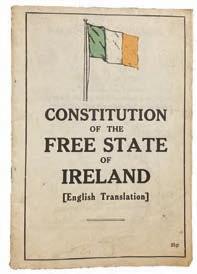
Griffith led a delegation to London

on 6 June with the Irish draft which minimised the place of the English monarch. The British government was furious again. They rejected the Irish draft and insisted on the one that eventually emerged, sticking strictly to the letter of the Treaty and placing the English monarch front and centre.
This was a crucial moment of decision, echoing the night of the Treaty signing the previous December. Now again in London, Collins and Griffith faced a choice – stick to their draft Constitution and the Collins-de Valera Pact or accept the British-dictated Constitution and fight the election on a straight pro-Treaty platform. They chose the latter course and, in a speech in Cork on 14 June, Collins broke the Pact, calling for votes for pro-Treaty candidates, rather than for all Coalition candidates. The Daily Mail commented, “After such a speech, the Pact can only be described as breaking up.”

Polling day was 16 June, but where was the new Constitution that the people were promised would be published? It did not appear in the newspapers until polling day itself meaning that vast numbers of voters never saw it and very few had a chance to scrutinise it.
The British imperialist press welcomed it warmly, with the Sunday Times saying, “the English victory is plain”. George Gavan Duffy, who had signed the Treaty, had believed that a progressive constitution was possible and was bitterly disappointed, writing that the Free State government could have held out and appealed to international opinion, including the League of Nations, against British dictation.
The election results were announced on 24 June. 58
• Winston Churchill and Lord Birkenheadpro-Treaty and 36 anti-Treaty TDs were elected as well as 17 for Labour, 7 Farmers Party, 4 Unionist, and 6 Independents. The Free State side immediately interpreted this as an endorsement of the Treaty. However, the result was far from clear-cut.
Up until two days before the election, the Pact had held and candidates had gone forward on panels supporting that Pact and a National Coalition. The vast majority were elected on that basis, including Labour, which supported the Pact. The Treaty as such was not put before the voters, the Free State Constitution having only appeared on polling day. And there was the matter of a fundamentally flawed register and an unequal franchise.
What had happened in London, the shredding of the Irish draft constitution, was unknown to voters. In the days that followed the election, the pattern of British pressure, and Free State collapse under that pressure, was set to continue until it culminated in the Free State bombardment of the Four Courts with British guns, the opening shots of the disastrous Civil War.

On the Sunday following the election, Republicans gathered at Bodenstown and the oration was given by Liam Mellows. Reflecting the sombre mood of the gathering, Mellows said:



“We who meet together on this holy ground do not as semble today to sing the swansong of Irish republicanism. The Irish republican movement is not dead. Certain peo ple have taken the road of expediency and descended into hypocrisy to achieve their object but republicans must not deviate one inch from the straight road. It is regrettable that our people have yielded to the threats of England but republicanism will go on in spite of what has happened. Gathered around the grave of Wolfe Tone today are some who have endured suffering and encountered terrible dan ger during the terrible days of conflict. We are still true to their ideals and will not be led away by those who have chosen the road of expediency.”
•
Mícheál Mac Donncha is a Sinn Féin Dublin City councillor
“The Irish republican movement is not dead. Certain people have taken the road of expediency and descended into hypocrisy to achieve their object, but republicans must not deviate one inch from the straight road”
LIAM MELLOWS
One of the largest military operations undertaken by the British Army since the end of the Second World War was mounted across the Six Counties on 31 July 1972. DANNY MORRISON writes 50 years after on the both the background to and days of what British military commanders codenamed ‘Operation Motorman’.




Free Derry had been established during the Battle of the Bogside in August 1969 when young nationalists stopped the RUC from coming into their area. Weeks earlier, Sammy Devenney had died from injuries he had received from the RUC who had broken into his William Street home and attacked the family with batons, fracturing their father’s skull and also causing fatal internal injuries.
Even when the British Army were deployed on 14 August and established barracks, their movements were severely restricted to night-time raids and patrolling on the fringes, to such an extent that the nationalist community enjoyed some relief from daily repression. Certain parts of other nationalist urban districts that the Brits found it dangerous to patrol were designated by the state and the media as no-go areas. That was to change in late July 1972, despite the slaughter six months earlier around Rossville Flats on Bloody Sunday.
When Stormont fell in March 1972 and direct rule was imposed by Westminster, the new Secretary of State, William Whitelaw, appeared open to new
paramilitary Ulster Defence Association which would go on to assassinate hundreds of Catholics, often in collusion with British military intelligence.
The UDA was indulged by the British Army and both openly flirted and cooperated in establishing roadblocks. The UDA threatened to establish its own no-go areas unless action was taken against nationalist Derry and Belfast. There were other no-go areas in Newry, Armagh, Lurgan, and Coalisland.

As a precondition for calling a truce, the republican leadership had demanded that its prisoners be given political status and that Gerry Adams be released from Long Kesh to participate in the talks. Whitelaw agreed. The British reneging on political status four years later led to the anti-criminalisation protests in Armagh women’s prison and in the H-Blocks, and to the 1981 hunger strike.
On 26 June, the IRA ceasefire started. Talks took place in London on 7 July and although they were inconclusive, the ceasefire was to continue until it was stretched to breaking point by the actions of
ideas. A huge Unionist march and rally at Stormont protested their loss of power. The internment of nationalists was slowed down and there would eventually be an IRA/British Army truce and secret talks between the republican leadership and the British government in London in early July 1972.
Meanwhile, the British right-wing media whipped up a frenzy about no-go areas being an affront to the rule of law. In 1971, loyalist vigilantes had formed the Woodvale Defence Association which took in the Shankill area in Belfast. The WDA morphed into the
The British right-wing media whipped up a frenzy about no-go areas being an affront to the rule of law
the British Army in Lenadoon in West Belfast on 9 July. The housing authorities had allocated Catholic refugees’ possession of empty houses at the bottom of Lenadoon which had been formerly occupied by Protestants who had left the area.
The UDA threatened it would violently resist the rehousing of the refugees. As the families proceeded down Lenadoon Avenue led by a lorry carrying furniture, they were blocked by barbed wire barricades manned by soldiers. The British Army drove a Saracen armoured car into the lorry, violently blocked the path of the families, dragged the driver from the cab of the lorry, and then began firing rubber bullets at the refugees.
Using a hotline to the British, the IRA warned of the situation escalating. The British, looking for an excuse to end the ceasefire, responded by saying that the IRA"was forcing the Catholic families into the houses". The situation escalated and the ceasefire was over.

On 21 July, the IRA planted 22 bombs, including car bombs, around Belfast and the city centre which killed nine people, including civilians and soldiers, in what became known as Bloody Friday. Images of the dead and injured were horrific and there was widespread condemnation. At the time, the IRA insisted that they had given adequate and precise warnings and questioned whether the RUC and British Army had acted on the information. I believed this myself initially until, as a result of the peace process and exchanges about the past, I met with former RUC men post-Good Friday Agreement who told me, and I believed them, that they were quite simply overwhelmed by the number of bombs and couldn’t cope.
Bloody Friday and the resumption of IRA military attacks gave the British government the pretext they need for launching Operation Motorman against the no-go areas. There was a build-up in troop numbers and in the early hours of 31 July, 30,000 soldiers and 5,500 members of the Ulster Defence Regiment moved into republican areas, including 11 battalions deployed in Belfast.
During the short truce period, many Volunteers had gone home for the first time in months and enjoyed some family life, but it was obvious that the Brits were preparing for an invasion. As it turned out, it was to be their biggest operation since Suez in 1956 and everyone was alerted to stay in billets. In Derry, marine craft came up the Foyle estuary and landed Royal Marines and Royal Engineers with heavy equipment. Centurion bulldozers were used
to remove the permanent barricades at which the IRA had often conducted checkpoints. During this operation, the Brits shot dead 15 year old Daniel Hegarty and wounded his young cousin. The boys had gone out merely to see the tanks. Soldiers also shot and wounded an unarmed IRA Volunteer Seamus Bradley who was not on active service. Most of the IRA had gone to ground. A decision had been taken not to engage in a stand-up firefight. Soldiers refused to treat Seamus Bradley and he bled to death.
I’d heard the armoured cars roll into the district and could hear the crackling of military radios. I cursed myself because the house in the Falls I was staying in was not the safest and I’d only come in at around 1.30am. I quickly climbed over the neighbouring yard wall and stayed in an outhouse from where I could hear banging and shouts for about two hours. I wasn’t sure if they were doing a house-to-house or targeting specific homes so I made my way over yard walls and when I could see them leaving the Fox’s in Iveagh Parade, I climbed into their yard and took refuge in their house. Bridie Fox was to keep a record of the searches on her home during the conflict – 89 raids by the British Army in total, usually in the early hours. Soldiers kicking in the front and back doors. Young ones terrified. Rooms wrecked as they came looking for Gregory and 17 year old Paul.

There was a build-up in troop numbers and in the early hours of 31 July, 30,000 soldiers and 5,500 members of the Ulster Defence Regiment moved into republican areas, including eleven battalions deployed in Belfast• 13 June 1972: IRA press conference with Martin McGuinness, Dáithí Ó Conaill, Seán Mac Stiofáin and Seamus Twomey
During Operation Motorman, the Brits occupied the GAA’s Casement Park in Andersonstown and Mac Crory Park on the Whiterock Road. They also took over the grounds of St Joseph’s teacher training college. In North Belfast, they occupied the top floors of Artillery Flats.
In our area, they took over the primary school in Mica Drive and built a military post on the top floor of the nurses’ home at Broadway Tower which gave them a commanding view of Iveagh and Beechmount.
They had already established Broadway Army Post inside the grounds of the Royal Victoria Hospital from August 1969 in contravention of the Geneva Convention. It was a notorious barracks – I was held there several times – and, months after the revelations about the ‘hooded men’, the scene of the torture in April 1972 of three locals – Eddie Duffy, Gerry Bradley and Gerry Donnelly, who had been given electric shocks in the genitals, and whose case was joined with that of the hooded men being taken at the European Court of Human Rights.
In the first days after Operation Motorman, British Army foot patrols were huge – sometimes up to one hundred strong. But, of course, it meant they were easily spotted and avoided or presented more targets. I think the Brits realised this very quickly because within two weeks, they reverted to smaller, mobile patrols, backed up by protective military vehicles circling the streets around them.
On paper and in propaganda terms, the no-go areas were reoccupied but in reality their reputation as being republican strongholds continued in the psyche of the Brits who knew they could only hold the streets during times of military saturation.
General Robert Ford, Commander of Land Forces, boasted that "Anyone can now go anywhere at any time." But not in South Armagh. The IRA had mined so many roads they were too dangerous for military vehicle use and the Brits even had to use a helicopter to empty the bins of Crossmaglen barracks.

The British Army described their objective in 1972 as ‘muscling the IRA out of existence’. How did that work out?
Many years after Motorman, senior British Army officers began acknowledging that their war against the IRA had failed. These admissions, I believe, were important in seeding the early peace process. In 1988, Sir James M. Glover, former General Officer Commanding the British Army in the North, said: "In no way, can or will the Provisional Irish Republican Army ever be defeated militarily."
In 1992, a senior British Army officer in The Times went further: "The IRA is … better equipped, better resourced, better led, bolder and more secure against our penetration than at any time before. They are an absolutely formidable enemy. The essential attributes of their leaders are better than ever before. Some of their operations are brilliant…" In July 2007, the BBC published an internal British Army document in which one military expert said that it had failed to defeat the IRA. It described the IRA as ‘a professional, dedicated, highly skilled and resilient force’.

Operation Motorman was just another failed attempt to use overwhelming military might against a long-suffering community and against a people’s army whose struggle and sacrifices ultimately brought the British to the negotiating table. •
Danny Morrison is a former editor of An Phoblacht/Republican News. His latest book is Free Statism & The Good Old IRA.
One of the joys of historical research, arguably the greatest joy, is the discovery of people buried in the thicket of the past who have not been given their due. So, I am delighted to exhume Denis Holland, who surely merits a prominent place in the republican pantheon.
It would be an exaggeration to claim that Holland, editor, publisher, pamphleteer, novelist, poet, orator and agitator, is entirely unknown. His life is sketched in the Dictionary of Irish Biography. It doesn’t convey the richness of Holland’s journalistic and political contribution to Ireland’s struggle for freedom from Britain in the mid-19th century however.
In his short, intense career, Holland wrote hundreds of thousands of words dedicated to a single aim; the unshackling of Ireland from British rule. Like other nationalists of the period, he
Ireland on the simple justice of her claim,” he contended, “The moral our history teaches is all the other way.” To bring about genuine change, armed struggle was inevitable.
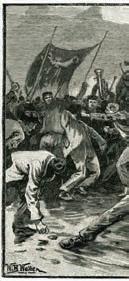
Holland’s truculence, in print and on the platform, won him few friends. Aside from antagonising the Westminster political elite, the Protestant Ascendancy class, and members of the Orange Order, he upset other nationalists, and other journalists, with his demands for a muscular response to British rule.

On occasion, his pro-Catholic polemics appeared overtly sectarian and some of his ideas, such as his belief in the racial differences of Saxons and Celts, now seem embarrassing. Yet Holland’s political writings in the years between 1852 and 1863 provided a compelling counterpoint to the prevailing press narrative. He challenged the Ascendancy newspapers in Dublin, the Orange papers in Belfast, and much of the output in nationalist titles, especially The Nation.
was committed to repeal of the Union. Unlike them, he was fired by a fierce opposition to landlordism and campaigned relentlessly on behalf of the agricultural poor.
Holland understood that the system of land ownership existed as a result of colonialism and was unlikely to be overturned by the force of argument. “The English parliament never did anything for
Born in Cork city’s Marsh district in 1826, little is known of his parents. A child prodigy, he wrote fluently from an early age and revealed an aptitude for debate, talents which emerged when he attended the Capuchin Friary. Its Superior was the noted temperance crusader Father Theobald Mathew, who founded
In his short, intense career, Holland wrote hundreds of thousands of words dedicated to a single aim; the unshackling of Ireland from British rule

a society to stimulate debate about the benefits of teetotalism. Holland was an enthusiastic member.
It wasn’t long before repeal of the Union rather than denial of alcohol dominated his attention. In his first job, as a reporter with the Cork Examiner, he covered several of Daniel O’Connell’s repeal meetings. He also witnessed the effects of the Great Hunger in west Cork. During a short period in Limerick city, he worked for the Limerick & Clare Examiner, which was run by two brothers on opposite sides of the repeal struggle. One was a staunch O’Connellite, advocating moral force; the other was a Young Irelander who favoured physical force. Disillusion with O’Connell also led Holland toward the Young Ireland movement.
Holland was influenced by the arguments of its most militant member, John Mitchel, which made his next move surprising. In 1849, aged 23, he joined the Northern Whig in Belfast, whose Presbyterian owner, Francis Dalzell Finlay, opposed repeal. He was, however, committed to the Tenant Right League, a campaign eagerly adopted by Holland. His work impressed Finlay, who elevated him to the editor’s chair when, to quote Holland, “I had only stepped over the threshold of manhood”.
He soon recognised there was limited freedom in editing someone else’s newspaper. So, he launched his own title in partnership with a Belfast printer, John P O’Hara. On 17 November 1852, he proudly presented the first issue of a triweekly newspaper, The Ulsterman, on behalf of “the Catholics of Ulster” who “have no independent organ to represent them.” He pledged that his paper would be “thoroughly liberal”, campaign for the extension of the franchise, and aim to secure tenant rights. His central concern was for the marginalised Catholic population who were suffering “abominable prejudice”.
His Ulsterman journalism proved to be a potent mixture of satire, scorn, and sarcasm. He castigated the English “who have too often maligned and cursed our race” and confidently forecast “the time when Ireland… will yet rise up, great and free and happy among the kingdoms of the world.”
His business acumen did not match his facility with words and O’Hara broke their partnership after just 37 issues because of the paper’s mounting debts. He was saved by a wealthy Belfast businessman, William Watson, whose daughter, Ellen, he later married.
While The Ulsterman acquired a respectable circulation and a decent reputation, Holland combined the roles of journalist and activist. His popularity was such that a rival paper, the Belfast Mercury, praised him as an “able editor” who “has made for himself the high character of an honest and independent journalist”.
The year 1857 proved momentous. First, Holland became embroiled in the controversy which erupted after 12 July violence in which three Catholic teenagers were shot and wounded. It engendered demands among Belfast’s Catholics for armed resistance and Holland attended a meeting of 600 men eager to form a “gun club” to combat “Orange aggression.”

Aware that the move would play into the hands of the city’s Protestant majority, it says much for his standing within the community, and his powers of oratory, that he talked the crowd down from taking such a perilous step. He argued instead in favour of lobbying the Dublin administration to legislate against anti-Catholic violence. To make the case, he produced a pamphlet entitled “The Orange Plague”.
Dublin Castle was listening. It ordered an inquiry after evangelical Protestants staged open-air preaching sessions, that were followed by rioting. Holland, who was one of the witnesses summoned to give evidence, praised the commission for concluding that “the Orange faction” were responsible for the trouble.
By the time the report was published, his interest was 120 miles away in “the wilds” of west Donegal. He had become a reporter
once more to investigate claims by a dozen priests that their flocks were suffering from destitution due to “landlord rapacity”.
In a remarkable series of articles, in which he mocked half a dozen landlords, such as Lord George Hill and Lords Conyngham and Leitrim, he told of their tenants’ miserable living conditions, “human creatures, made to God’s image, crouch and shiver by the little steaming turf heap... where the ragged cow and the little sheep are huddled together with father, mother, and children.”

He also defended the priests on the grounds that they had been “bullied, and coerced, libeled and scandalised” by “corrupt
Among its first articles were Holland’s editorials lampooning the inquiry committee’s official report, a whitewash which cleared the landlords of responsibility for their tenants’ poverty. The result was unsurprising, given that all but one committee member was a landowner and it fuelled Holland’s disgust for British supremacy.
As an antidote, he advocated the revival of Irish language and culture through Gaelic sports, calling for the creation of a network of parish clubs and a centralised administration. Sixteen years later, his idea became a reality with the formation of the GAA. At the time, according to a fellow journalist, Holland was “the picture of hope and manhood… a man of information and anecdote, which he had the faculty of imparting with fluency… in a most melodious brogue.”
He was a founding member of the National Brotherhood of St Patrick, a front organisation for the clandestine Irish Republican Brotherhood (the Fenians), which advocated armed revolution to secure Ireland’s independence. Holland’s Irishman, as the IRB’s principal platform, published an explosive letter in April 1862 from the prominent Fenian, Jeremiah O’Donovan Rossa, in which he accused the editor of The Nation, A.M. Sullivan, of responsibility for his arrest some four years before.
Sullivan unwisely sued Holland for libel and both suffered from the outcome. Sullivan emerged with a damaged reputation and an award of just sixpence. Holland had to rely on his increasingly
newspaper writers.” They had acted in the wake of protests by tenants about landlords usurping their rights by sealing off mountain pastures in order to make profits by renting them to English and Scottish shepherds. As a result, sheep were either slaughtered or disappeared, leading to the arrests of several tenants suspected of what were called “outrages.”

Holland’s reports, wholly sympathetic to the tenants, were compulsive reading and his intervention was one of the reasons the Westminster parliament set up a so-called “destitution” inquiry. While it was deliberating, Holland moved to Dublin, closed The Ulsterman, and launched a nationwide title, The Irishman.

Denis Holland’s decade of visionary journalism deserves recognition because he identified the reality too many of his peers refused to countenance; Ireland could not win its freedom without fighting for it
platforms including Spotify and
Louise O'Reilly
Roger Cole
What next for Workers?
War, Peace and Irish Neutrality

Osgur Breatnach
Victim of the State: The Sallins Case

Selina McDermott & Jimmy Fitzpatrick
John Kelly & Tony Doherty
Stardust Fire
Bloody Sunday
Maeve McLaughlin & Pádraig Delargy
Hilary Dully
Síle
Donegal tenants suffered miserable living conditions and destitution at the hand of rich landlords

exasperated father-in-law to pay his heavy legal costs. Watson also obliged him to sell The Irishman, marking the end of Holland’s major political and journalistic influence.
In 1863, he left his wife and their two sons to go to London, where he acted as correspondent for The Irishman and the shortlived Fenian paper, the Irish People. He was also founding editor of the London-based Irish Liberator, but he fell out with its main fundraiser amid claims that he, a former advocate of temperance, was guilty of excessive drinking.
Matters grew worse when he decamped to New York in 1867. He became a marginalised figure, even among fellow Fenians, and eked out a living by writing inconsequential historical articles for several Irish-American newspapers. For a while, he edited a literary review, The Emerald, in which he adopted a mawkish tone to praise various Irish political figures he had met. He also wrote melodramatic stories, a couple of which were published as novels.

An old acquaintance found the once vivacious and well-groomed editor “stooped, dazed and hungry-looking”. He had become far too fond of drink. At just 46 years of age, in December 1872, he was found dead at his lodgings in Brooklyn. Among the small band of mourners at his funeral were republican exiles, including John Devoy and the poet John Locke.
A sad end, but Denis Holland’s decade of visionary journalism deserves recognition because he identified the reality too many of his peers refused to countenance; Ireland could not win its freedom without fighting for it.
Part
Bloody Sunday
Máire Comerford - Inspiring Revolutionary
TO READERS:
have been unable to find a photo, or even a drawing, of Denis Holland. If anyone can help, please email me:
roy.greenslade@mac.com
In the mid-1980s when I was in the Long Kesh prison camp, in the H Blocks, I found myself engaged in a conversation with a fellow Republi can POW in which we assessed the task facing the Republican Movement at that time.
The IRA was in a strong position mili tarily, carrying out effective operations against the British crown forces in Ire land, in Britain, and in Europe.
Sinn Féin was finding its feet politically and election results were not only undermining British propaganda, still in criminalisation mode, they were a tangi ble demonstration of the popular support for the struggle among nationalists and exposed the SDLP’s attempts to secure an internal solution to the conflict.
Both Garrett FitzGerald’s 1984 New Ireland Forum and the Anglo-Irish Agreement/Hillsborough Accord signed in 1985 by Margaret Thatcher, heralded as a major step forward in Anglo/Irish re lations by the Dublin political establish ment, had more to do with bolstering the SDLP which couldn’t prevent the grow ing influence and relevance of Sinn Féin on its own.
In our H Block discussions, we conclud ed that, for republicans to win political pow er in Ireland, we had to challenge the Free State establishment. If we wanted to shape the country in the manner envisaged in the Proclamation as read by Pearse at the GPO in Dublin or to establish a society modelled on the philosophy of Connolly, this would be the hardest part of that struggle.
The political elite had entrenched itself in power in the 26 Counties in the aftermath of the counter-revolution of 1922/23 that saw the defeat of the anti-Treaty IRA.
As Connolly predicted, the green flag re placed the ‘Butcher’s Apron’ but little else changed. It was against this background that the backlash against republicanism, dressed up in ideological attacks on the modern IRA, took place.
The idea that the IRA of the Tan War, of Tom Barry, of the Flying Columns, and the Michael Collins’s ‘Squad’ were morally su perior to those who were fighting the same
British Army and against the same occupa tion on the streets and in the fields of the North as those freedom fighters of 1916 to 1922 became common currency.
It became a political and ideological im perative to disassociate the actions of ‘The Good Old IRA’ from those of the modern era. Arising out of this came the deliberate pol icy and strategy of the Free Staters to push a revisionist interpretation of history that would legitimise their conduct since the

end of the Civil War in 1923. It would justify their stewardship of the 26 County state that gave undue privi lege to the Catholic Church and often functioned on the basis of corrupt clientelist politics.
Out of this came ‘The Good Old IRA’, a pamphlet cataloguing numer ous actions carried out by the IRA during the Tan War.
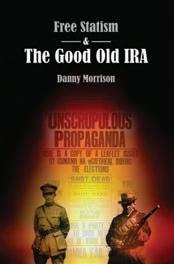
Director of Publicity for Sinn Féin Danny Morrison was approached in 1985 by Brian McDonald who had written some articles in An Phoblacht/Republican News attacking historical revisionism under the pseudonym Jack Madden.

His idea was to look at the tactics used by the IRA during the Tan War and set them against those employed by the modern IRA through the 1970s, 80s and 90s.
Tom Barry famously said, “They said I was ruthless, daring, savage, bloodthirsty, even heartless. The clergy called me and my comrades murder ers; but the British were met with their own weapons. They had gone down in the mire to destroy us and our nation and down after them we had to go.”
In real terms, this saw civilians killed, in formers shot and their bodies ‘disappeared’, RIC and other British personnel shot dead in front of their families.
Despite this, Fine Gael and Fianna Fáil hang the cloak of moral rectitude on the ‘Good Old IRA’.
Sinn Féin’s success in the 2020 26 Coun ty election exposed the political reality that Fianna Fáil and Fine Gael are two sides of the one reactionary coin. And it was no sur prise that the ‘civil war’ parties went into coalition to stop Sinn Féin. Where did we hear that before?
The ideological onslaught went to a dif ferent level of venom and it is in that con text that Danny Morrison reproduced ‘The
It became a political and ideological imperative to disassociate the actions of ‘The Good Old IRA’ from those of the modern era
Good Old IRA’, with an extended introduction including a chapter titled Modern Free Statism.
Here he acknowledges that to label someone a ‘Free Stater’ is to insult them.
However, the difficulty for those in the po litical establishment in the 26 Counties who define ‘Ireland’ in terms of the State that stops at the British imposed border is that by acting as a bulwark against reunification
and in effect give unionists a veto over the future of the country they are de facto de fining themselves as Free Staters.
Indeed in 2020, Micheál Martin described a referendum on unity as ‘divisive’ and ‘partisan’. It would not happen on his watch!

The fact that RTÉ, described as the ‘national’ broadcaster, geoblocks pro grammes to prevent Six County viewers from tuning in, uses maps that on occasion omit the six north eastern counties, and re fers to the Northern State as ‘Northern Ireland’ reinforces the partitionist mindset of the State.

And the refusal to open a passport office in the North to deal with the backlog of re quests for Irish passports underpins the view that people from the Six Counties are ‘other’.
Also denying Northerners the right, as Irish citizens, to vote in Presidential elec
Dannytions is as clear an indication as any that the State stops at the border. What clearer an example of Free Statism can you get than that?
Ultimately, this whole debate needs to be read in the context of the Free State politi cal system circling the wagons in their bid to thwart Sinn Féin. They want to prevent a United Ireland, based on the Proclamation of 1916, that will break the cosy political, economic, media, and social cartel that has allowed them control the state since parti tion.
So, the constant bombardment we get through the media and those commenta tors who keep telling the electorate that Sinn Féin is not fit to be in government because of its connection with the IRA ex poses a classic case of historical miasma. It was good enough for the IRA of the 1920s to engage in armed rebellion, but not ok for Northern nationalists to wage armed strug gle against the British state.

The new edition of 'The Good Old IRA' also reprints Mick Timothy’s 1984 editorial Béal na mBláther which is an exposé of the twofaced hypocrisy of the Free State political class, not least Fine Gael.
The editorial is the icing on the cake for me and the new edition of ‘Free Statism and The Good Old IRA’ should be read by all republican activists as a blueprint for chal lenging those politicians and commentators whose bread is buttered on the partitionist side! •

Denying Northerners the right, as Irish citizens, to vote in Presidential elections is as clear an indication as any that the State stops at the border

 BY SEÁN McELHINNEY
BY SEÁN McELHINNEY
In October 2021, at the Irish Congress of Trade Unions’ policy-making conference in Belfast, trade unionists rallied under the banner, “No Going Back” and unanimously endorsed a motion committing ICTU to promoting the interests of workers in conversations about constitutional change on this island.
The arguments in support of the motion were inspirational. The vision for a new Ireland need not be characterised by fear of the past, but rather hope for the future.
For many workers, the present reality of life in Ireland, both north and south, seems pretty
unsustainable, but the potential to create a new Ireland presents the working class with a major opportunity to achieve fundamental social transformation.
I am one of the privileged ones in my circle of friends. Just last week, my wife and I bought a new house with a lovely back garden looking out over Benbradagh mountain. She’s already dreaming of a dog by the front door and weans playing football in the street.
In campaigning for a new Ireland, we could demand
that every family and independent citizen has the right to a home with a garden.
Irish national self-determination presents a momentous opportunity for the trade union movement and it seems inevitable that the conditions for a border poll will be realised within the next five years.
In March, I visited the Basque Country and represented Trade Unionists for a New and United Ireland (TUNUI) at an international conference of “pro-sovereignty trade unionists”.
Pro-sovereignty trade unionism involves trade unions in occupied and stateless nations prioritising campaigns for national self-determination. Pro-

The vision for a new Ireland need not be characterised by fear of the past, but rather hope for the future
• Koldo Sanchez (International Secretary LAB) Seán McElhinney (TUNUI) Amanda Verrone (Deputy International Secretary and Social Justice Lead)


James McVeigh’s first novel ‘Stolen Faith’ was published recently and reviewed in An Phoblacht online. We asked James to write for us on the wider story of his journey through the H-Blocks on to being a Sinn Féin councillors, trade union representative, and now novelist.
 BY JAMES McVEIGH
BY JAMES McVEIGH

Stolen Faith is the title of my debut novel published by the O’Brien Press. It is a tragic love story and thriller dealing with the consequences of Ireland’s brutal system of Mother and Baby Homes.
Many victims and survivors of these terrible institutions have praised my novel. A fact I am immensely grateful for and genuinely humbled by. It is hard to believe that it is only the second work of fiction that deals with the experience of these women and children and seeks to tell their stories. Their truth cries out to be told and heard. Not just here in Ireland, but throughout the world.
I hope my novel is read by thousands, millions even. Not just for me, but for them. All writers dream. But if it’s only ten, or one hundred, or one thousand even, so be it. It is a story I am incredibly proud of that needs to be heard.
I often shake myself as I reflect upon my own personal journey from IRA fighter to writer. I left school at 16 and went on to study to be an engineer. This was 1981, the year of the Hunger Strikes.
The tragic death of the hunger strikers, the brutal conflict on the streets with the RUC and British Army
catapulted me into the IRA. At 17, I believed, and still do, that I was justified in taking up arms to fight a foreign army that patrolled our streets, searched and destroyed our homes, and let our neighbours and friends die on Hunger Strike.
I left the normal life of work and study behind, committing myself to the life of an urban guerrilla. Not unlike many of those brave young Ukrainians who have taken up arms to defend their country from Russian invasion.
I see myself and my young friends who joined the IRA in their innocent idealistic faces. It is beyond ironic that many of those who once condemned us are now cheerleaders for the Ukrainian resistance.
Within two years, I was captured by RUC and imprisoned in the H-Blocks of Long Kesh, one of Britain’s notorious gulags in Ireland. Over the previous decade, it had housed thousands of republican prisoners and its fair share of innocent men and boys who had been tortured and sent to prison for decades on the basis of false confessions.
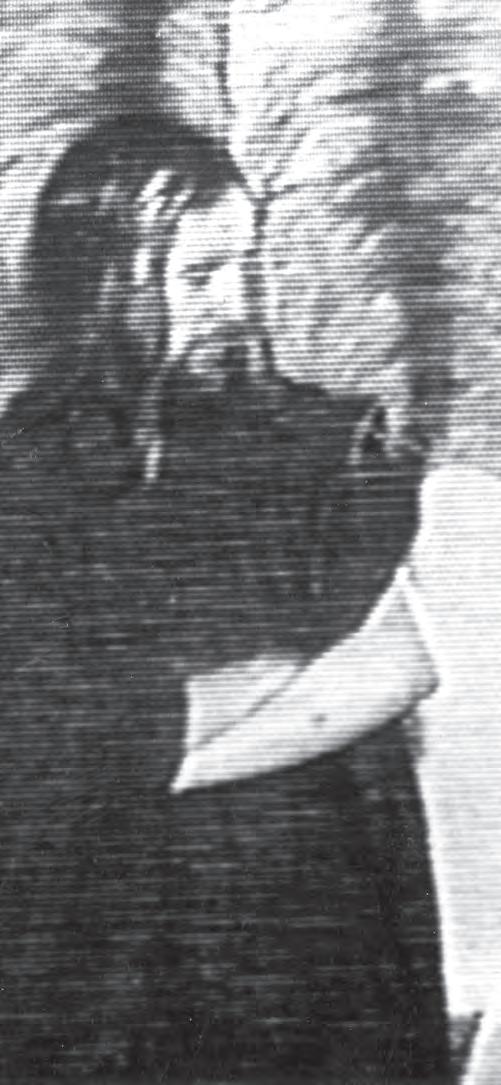
When I landed in the H-Blocks, the blanket protest was over. Conditions were much better and republican

prisoners could associate together and use their time outside of the cells in whatever way they saw fit. Usually sports activities, handicrafts and education, and, of course, planning escapes.

I was encouraged by older republicans, mostly former blanket men, to read, to participate in the prisoner’s own education program, and to take advantage of the formal education now available within the prison.
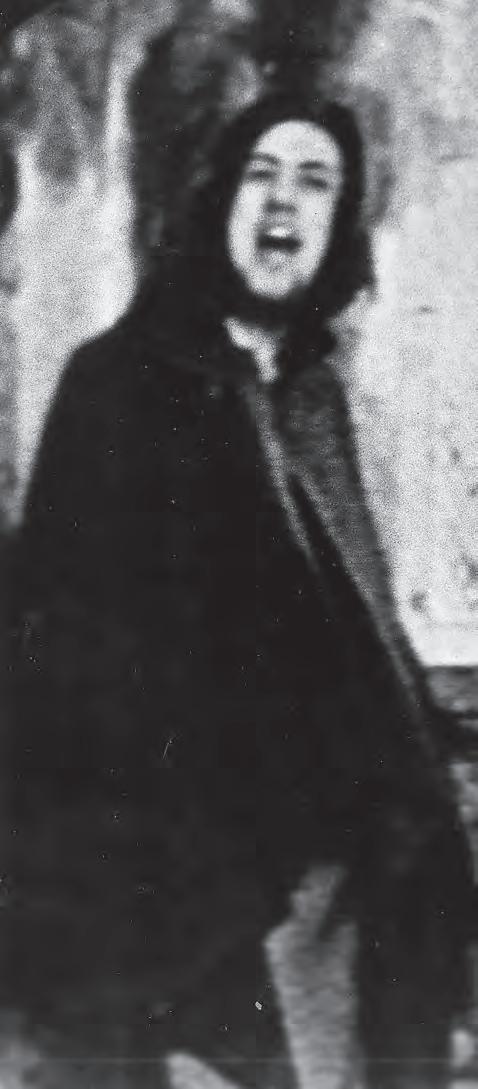
I chose education. We devoured every book we could get our hands on. We watched every documentary shown on
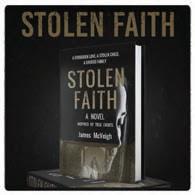
• July 2000 - James McVeigh, speaking to the press on his release from the H-Blocks

We devoured every book we could get our hands on. We watched every documentary shown on television. We debated and we argued. We studied our history in minute detail and imagined the future
television. We debated and we argued. We studied our history in minute detail and imagined the future.
We drew inspiration not just from our own heroes, but from across the world, from across millennia, from Spartacus to Ho Ci Minh. From Mary Ann McCracken to Rosa Parks.
During those years, a wonderful institution arrived in the H-Blocks. It was the Open University. Within a few years, dozens of Republican prisoners were studying with the OU, myself included. The H-Blocks had now become a University of Freedom.

I often thought of the hunger strikers and the blanket men as I studied in my cell late into the night. This was their priceless gift to me and I refused to waste it.

Two prison sentences and 16 years later, I had finished my history degree with the OU, had begun a Masters in Human Rights, and had published my first history book ‘Executed: Tom Williams and the IRA’, focusing on his execution by the British in 1942. Many others had done likewise or had written plays, poetry, short stories, some had even begun the first chapters of their PhDs. What an incredible journey and story!
From naked men and women scribbling Irish vocabulary and grammar on shit covered walls and shouting lessons through the narrow gaps in the heavy metal doors, to many of those same men and women constructing complex theories and hypotheses within those very same concrete boxes.
Many of those men and women are now political leaders and activists, many are community activists, some like myself
are Trade Union activists, trying to follow in the footsteps of James Connolly and Winifred Carney.

Others lead quiet contented lives simply dedicated to their families. Others remain scared by the horror of the conflict, by what was done to them and indeed what they did to others. That also is the legacy of our conflict.
However, it is wonderful to see so many former prisoners write and publish literature. Too many to actually name here. Isn’t that something?
Poets, historians, journalists, playwrights, film makers, actors, bloggers, seanachaíthe, ‘sleggers’, (a prison term for slagging), some of the world’s best ‘sleggers’ actually. Olympian sleggers!
I’m still on a journey that began in a quiet H-Block cell. Planning my next novel which will be set in occupied Palestine.
What an incredible journey. One that began with one young, terrified, but extremely brave prisoner, Kieran Nugent. Followed by years of gruelling protest and ten incredibly courageous hunger strikers. A truly inspiring journey that turned a hell hole into a university of freedom.
Most people connected with An Phoblacht over the years have an experience of selling the paper, what we used to call ‘over the arm’ sales. It might have been on a trek of local pubs, at meetings or marches, in rain and sunshine. And though An Phoblacht is now mostly sold through subscriptions or accessible online, Jim Ward’s poem captures a sense of that experience of how republican papers were sold for decades.
Attention-like standing, sellers exposed banner and headline chest out, like an extra vest Outside Dublin’s GPO, Woolworth’s, Galway, and along the Falls.
Or in chosen drinking spots, where owners turned eyes blind for a second, As hands rifled pockets for some change. Eyes down, the walkthrough-path parting, like the Dead Sea.
Faces, pained, as if carrying the weight of history’s injustice, Passed on for generations from family hearths: Earnest men and women, as rare as scruples are in Dublin commerce.
Calling out ‘An Phoblacht – Republican News!’ If France’s hour had Camus’s Combat, Then ours had: Mac Thomáis, Morrison, Timothy, O’Hare, Mac Donncha & more; Editors playing their part, ‘no matter how small’, Crafting it weekly in as lár an chogaidh, igcuimhne…,
A glimpse of truth in the war of lies: That was, still is, ‘The Paper’…our paper…’An Phoblacht’.
Abú. •

Others remain scared by the horror of the conflict, by what was done to them and indeed what they did to others. That also is the legacy of our conflict


‘On Dangerous Ground – a Memoir of the Irish Revolution’ by Máire Comerford, edited by Hilary Dully, had a special launch in Sandyford, County Dublin at the end of March.

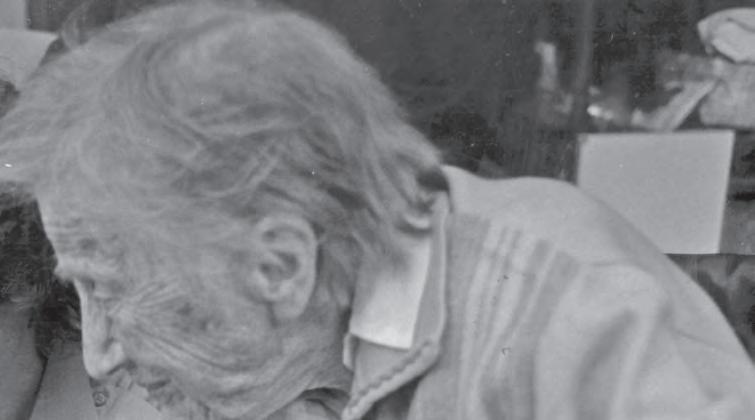
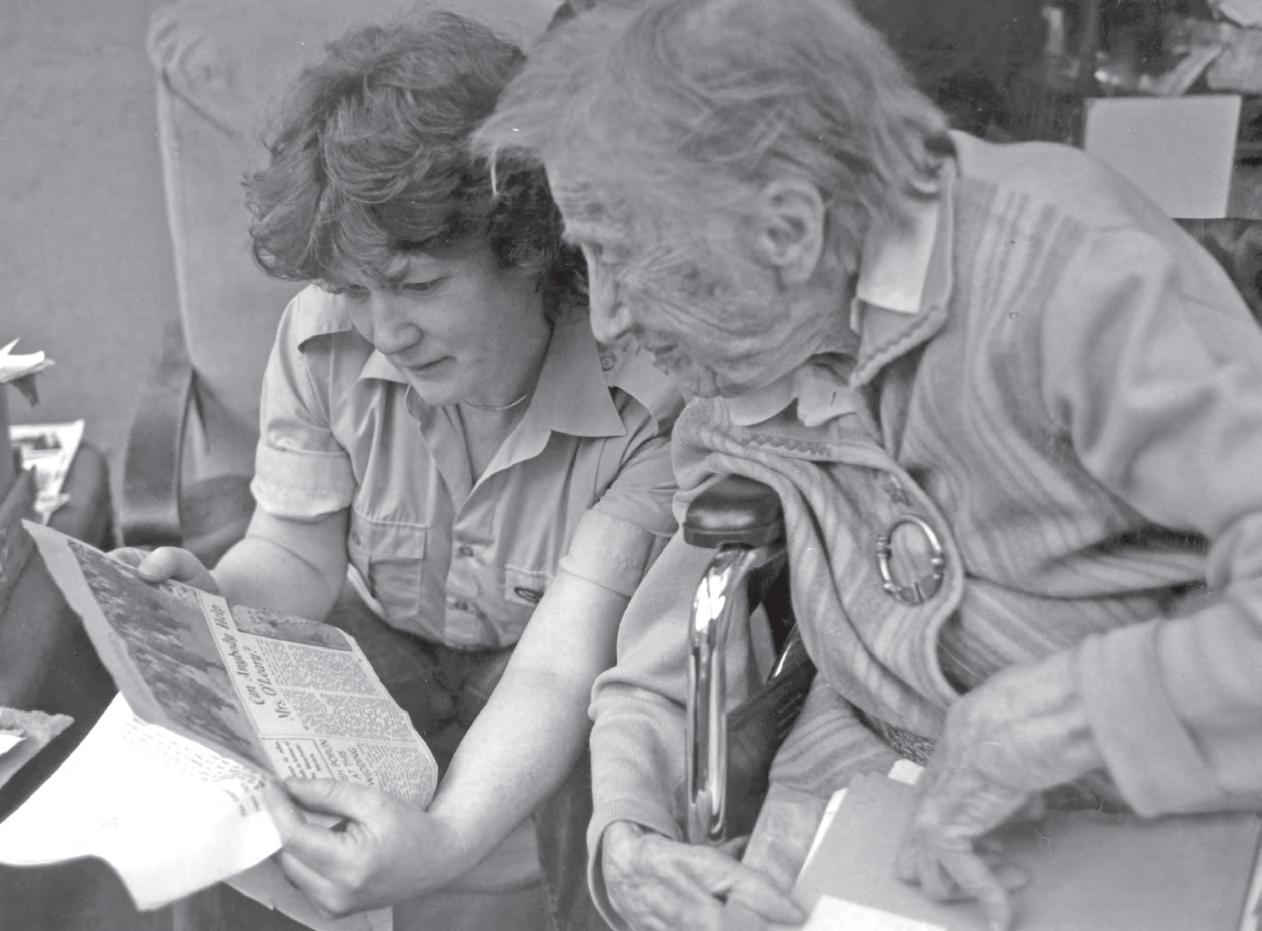
Máire lived in the village for many years and some of her old friends and neighbours attended the launch which was organised by the local Máire Comerford Sinn Féin Cumann and publishers Lilliput Press and was hosted by Sinn Féin representative Shaun Tracey. Speakers included Hilary Dully, Mary Lou McDonald, and historians Liz Gillis and Tim Pat
Coogan. Attendance included Proinsias Ó Rathaille, grandson of The O’Rahilly, and Evelyn Campbell, who sang her song ‘Fenian Women Blues’.
Rita O’Hare got to know Máire when she came to live in Dublin in 1972. Rita is a lifelong Republican activist and former political prisoner, whose roles within the Republican Movement included editor of An Phoblacht, Sinn Féin Director of Publicity, and the party’s North American representative. Here, she pays a personal tribute to Máire.
Máire was in the Hammam Hotel with Cathal Brugha. I can still hear her voice saying these words after Brugha died, “We were tired, tired, tired and broken-hearted.”
�Thanks to Hilary Dully and Joe Comerford for getting Máire’s words published as they deserve to be and to Diarmuid and Shaun for organising this event and inviting me to say a few words about Máire.
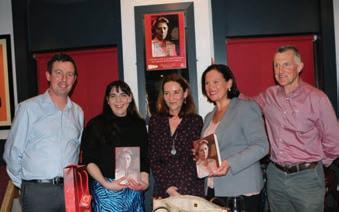
I was introduced to Máire Comerford by a contemporary of hers, Sighle Humphreys, another absolutely extraordinary woman whom I met not long after I came to Dublin. It was only when I was writing these words that I realised that Máire was the same age when I met her as I am now. We three shared well over 100 years of republican activism between us.
Máire was still working on her memoirs, meeting with contemporaries of her time. She had a vegetable garden behind the cottage next door which she still worked, though it was getting hard for her. She had a wee dog that she had found injured outside her house and took him in. She called him Shinner and was heartbroken when he got knocked down and killed.
I used to walk from where we were living at the time over to Sandyford to visit her. I did not have a car so it was walk or cycle. Máire in her day travelled by pony and trap, bicycle or walked. So, she approved very much of my mode of travel to see her.
Our children loved to visit her with me, to hear her stories of her childhood in Wexford where they learned to ride their ponies before they could walk. Children were not taught to be afraid in those days, she told them. You learnt to ride and if you fell off, you got back on again. You did not ever whinge.
That spirit she carried with her into her fighting in the Tan War in Cumann na mBan. Máire was utterly fearless. Her appearance and accent got her out of some dangerous moments as there was an
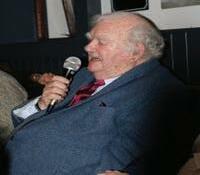
Rugadh Máire, iníon do chlann Angla-Éireannach, in Ráth Droma, Co. Chill Mhantáin agus seoladh sall go Londain í chun oideachas a fháil. Nuair a d’éag a hathair, fágadh an clann gan mhaoin agus b’éigean do Mháire dul ag saothrú. Ar fhilleadh ar Éirinn di, chónaigh sí lena hun cail, Thomas Louis Esmonde agus ghlac sí páirt i ngluaiseacht com hoibritheach áitiúil agus bhí sí mar bhall de ‘United Irishwomen’, ea grais a ghlac leis an ainm Bantracht na Tuaithe (Irish Contrywomen’s Association) níos déanaí. Le tús troda sa Chéad Chogadh Domhanda thug sí faoi faoiseamh a eagrú do theifigh ó mBeilg.

Nuair a bhí sí ar cuairt ar Baile Átha Cliath, chonaic sí féin eachtraigh Éirí Amach 1916 agus chuidigh le teachtaireachtaí míleata. Níos déanaí, d’fhill sí ar chontae Loch Garman agus chuaigh isteach i Sinn Féin i nGuaire. B’í a bhí mar eagraí an chontae don toghacháin sunatasach i 1918 agus chaith saighdiúirí d’airm na Breataine í de thraein mar go raibh sí meáite ar fanacht leis na páipéirí balóide agus iad á seoladh go baile Loch Garman don comhaireamh. Bhí feachtas toghachánaíochta ar siúl aici do Roger Sweetman ( 1874-1954) a togh adh mar theachta dála do Loch Garman Thuaidh i mí na Nollag, 1918. Mhúin sí ar feadh tréimhse i scoil Alice Stopford Green i mBaile na
Cúirte (Sands Hotel níos déanaí) agus d’fhostaigh Alice í i bhFaiche Stiabhna, áit ar bhuail sí le an-chuid de mhórphearsain cogadh na saoirse. Bhí sí fíor-chrúógach mar bhall de Chumann na mBan ag síor obair mar thachtaire is mar thiománaí do bhaill armtha is lucht po lataíochta ó Óglaigh na hÉireann ó Shinn Féin. Uair amháin, d’éirigh léi teitheadh ar rothar, ó na Dóchrónaigh tríd Mt. St. Benedict agus ar aghaidh go Logán áit a bhfuair sí tearmann le muintir Hatton.
Cé gurb mian léi an cruatain anró is baol a d’fhulaing na fir fulaingt leo, ag an am sin cosnaíodh na mná óna leithéad, chomh fada agus ab fhéidir. Uair amháin agus í ag géilleadh, bhain Máire comhartha na Croise Deirge dá cóta, comhartha a chuir sagart ann mar chosaint di. Thaistil sí go Stáit Aontaithe Mheirceá comh maith, ag cruinniú airgead do Shinn Féin.
Bhí sí i dTeach an Ardmhéara i mí Eanair 1919 d’oscailt an Chéad Dáil. Ag scríobh ina leabhar “An Chéad Dáil” (1969) faoin aitmeasféar a bhí ann ar an lá sin, mháigh sí “Never was the past so near or the present so brave or the future so full of hope. We know what Englands answer was. We are still living with the consequences of that British denial of Irish democracy, the unfinished business of Irish History.”
assumption that women of her class could not be involved in this revolution. How wrong they were!
Maire, Sighle, and their contemporaries were a formidable force. They fought on the front lines, carried information and communications through enemy lines, often under fire.

Máire and Sighle and the majority of the women volunteers rejected the Treaty and fought in and were imprisoned during the Civil War. She was in the Four Courts in the thick of the attacks on it. Máire was in the Hammam Hotel with Cathal Brugha. I can still hear her voice saying these words after Brugha died, “We were tired, tired, tired and broken-hearted.”
She and other Cumann na mBan women stood guard at his coffin. Her heartbreak was for all those who had died in the fight to end British rule and the betrayal of the

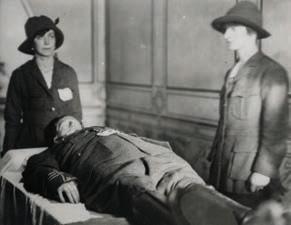
revolution by the Treaty. The Civil War was even more heartbreak.
Máire talked often and passionately about the need to be vigilant and selfcritical, of how essential communications were, and how Sinn Féin in the ‘70s had to try to overcome the difficulties that Partition posed to an all-Ireland party.
Danny Morrison visited with news of the Hunger Strikes of 1980 and ’81. She was not able to visit the H-Blocks, but my husband Brendan and I took her to Portlaoise to visit prisoners there. A former prisoner herself, she had great empathy with them.
I was in Limerick Prison for two years from 1975 to 1977. Máire was much frailer when I saw her when I got out and eventually was in a wheelchair. She very much wanted to stay in her own home, but the house was not wheelchair friendly and Le linn Cogadh na Saoirse, nuair a bhí Mícheál Ó Coileáin ar a theitheadh, cruthaíodh bréag-aitheantis dó agus cuireadh cúp la theach ar cíos dó. Chuideodh sé go mór leis dá mbeadh ‘líon tí’ á chuid féin aige, líon tí nach nathnódh na póilíní agus toisc seo, d’eagraigh Máire go dtiocfadh a máthar féin go Baile Átha Cliath.
Ar feadh cúpla seachtaine, bhí Eva Esmonde Comerford, máthair Mháire, iníon le fear ar bronnadh an ‘Victoria Cross’ air le linn Coga dh Chrimé agus a bhí mar Chigire Cheantair i gConstáblacht Ríoga na hÉireann i mBéal Feiriste, ag ligint uirthi ar feadh roinn seach taine, gurb í féin mátair cheannaire Óglaigh na hÉireann, Mícheál Ó oileáin!
Le linn Cogadh na gCarad, bhí Máire ina ball den ‘White Cross’ agus bhí sí sa gharastú Pobalánach sna Ceithre Chúirt in éineacht le Liam Mellows sna laethanta deirneacha sular scriosadh é ag fórsaí an tSaorstáit. Go deireadh a saol, glaoigh sí an “frithréabhlóid” ar Coga dh na gCarad.
Mar gheall ar í a bheith páirteach i mbeart chun Liam Tomás Mac Cosgair, Uachtarán ar Ard-Chomhairle an tSaorstáit, a fhúdú, gabhadh í agus cuireadh í i bPriosiúin Mhuinseo. Dhiúltaigh sí ithe
I think about them often, truly extraordinary republican women who fought alongside the IRA with courage and determination and on equal terms• Cathal Brugha lying in state in the Mater Hospital, July 1922; Máire Comerford (right)
so Brendan went over and widened the doorframes so she could easily get into her bedroom and bathroom.
She made all the arrangements for her funeral and wanted Danny Morrison to give her oration. She chose to be buried in Wexford on the side of a mountain
where she had run a chicken farm. It was December and it snowed that day. It was very Máire; no frills, no fuss, but a funeral in a blizzard.
I will never forget her or Sighle and I think about them often, truly extraordinary republican women who fought alongside
the IRA with courage and determination and on equal terms.
They stood with the Republic and never lost the belief that it would be achieved. This is a wonderful book. It is Máire speaking down through the years. I urge you all to read it. •
agus scaoileadh amach í tar éis 27 lá ar stailc ocrais.
Dála an-chuid a ghlac taobh na bPoblachtánach, tar éis gur síníodh an Conradh, chuaigh sé deachair uirthi fostaíocht a fháil agus rinne sí iarracht feirm éinlithe chlóís a bhunú i gContae Loch Garman ar thalamh a bhron an tAthar John Sweetman uirthi. Sa deireadh thiar, i 1935 d’éirigh léi post a fháil mar iriseoir le Scéala Éireann (The Irish Press) agus d’fhan ann gur éirigh sí as i 1965.
Go deirneach sna tríochaidí, bhí sí gníomhach i bhfiolsiú “War News” Óglaigh na hÉireann agus ansin sna daicheadaí d’oibrigh sí do na “Prisoners’ Relief Committees”. Chaith sí an-chuid ama ag bailiú cáipéisí a bhain leis an gCéad Dáil agus Cogadh na gCarad ionas nach bhféadfadh lucht an tSaorstáit an fhírinne a casadh nó a lúbadh chun an tangnacht a cheilt nó a claochlú. Chaith sí am ar a chumhní cinn féin, cuid foilsithe cheana féin i nGaeilge. I 1976 cuireadh faoi agalla mh í agus daoine eile a ghlac páirt in imeachtaí 1914-1923, do chlár faisnéis telefíse le RTÉ, ‘Curious Journey’. Foilsíódh leabhar bainteach leis an gclár seo ina dhiaidh sin.
Scríobhadh sí go rialta chuigh na priosiúnaigh sna H-blocanna agus i bPriosiún Ard Mhaca agus d’fhearadh sí fáilte fial roimh éinne a thabharfadh cuairt uirthi ina teachín in Áth an Ghainimh. Bhí sí gníomhach i bpolaitíocht na bPoblachtánach do dtí an deireadh agus
gabhadh í ag na Gardaí ar ardán Shinn Féin in mBaile Átha Cliath i 1974 agus í bliain is ceithre fichead d’aois. Gearradh £10 uirthi i 1976 as ucht bheith páirteach i léirsiú eile agus bhí sí ag iarradh dul isteach i bpriosiún seachas seo a íoc.
D’éag sí ar an 15ú lá de mhí na Nollag, 1982 in aois a naoi mbliain is ceithre fichead agus cuireadh faoin bhfód í, i reiligín gleoite tao bh thiar de Mt. St. Benedict gar do Ráithín Chuileann, lena cairde is a comh-poblachtánaigh an t-Ath John Sweetman is Aileen Keogh, seansaighdiúir de Chogadh na Saoirse. Chónaigh sí i Mt. Nebo gar do sin agus bhí dreatháireacha óga léi mar scoláirí sa scoil chlúiteach sin mar aon le daoine cáiliúla cosúil le Seán MacBride. Sheinn an píobaire Fintan Vallely ‘Boolavogue’ ar thaobh na huaighe.
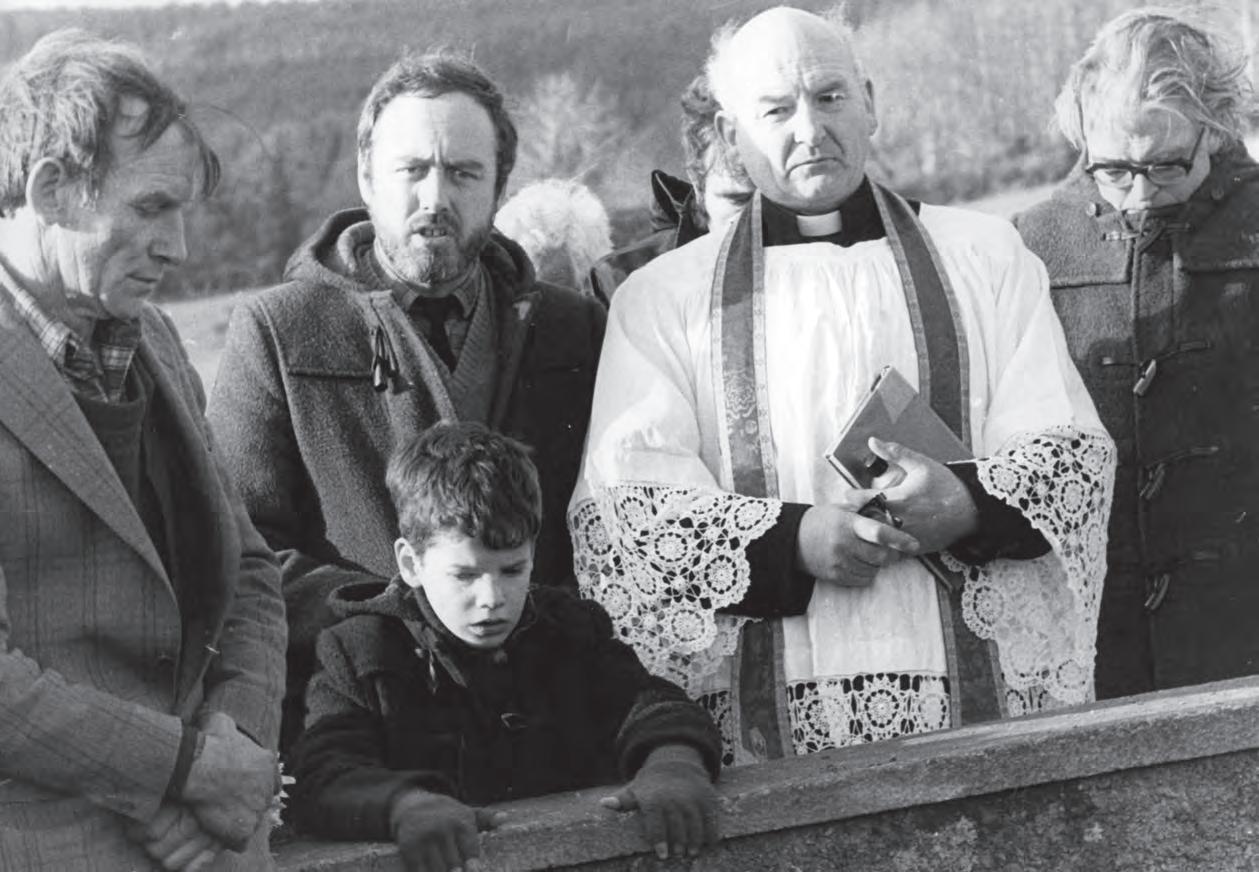
Thug a cara is compánaigh airm, Danny Morrison a horáid adhlach ta inar mhol sé “ 'the grand old Dame of Republicanism' agus garda brataigh ó Fianna Éireann lámh leis. Lean sé leis “Máire was not only an eye-witness of history, but a conscience of a nation, who experi enced and suffered and bore testimony to the expediency of those who suppressed the principled…”
“She was a lover of the cause of freedom, a freedom fighter, a rebel and a republican activist. Conversations with her were refreshing and inspiring, whether it was about Liam Mellows or Cathal Brugha, or her comments and advice on the conduct of today’s liberation struggle.” • Go raibh leaba aici i measc laochra na nGael!
 BY MÍCHEÁL Mac DONNCHA
BY MÍCHEÁL Mac DONNCHA

The word ‘iconic’ is over-used these days but, on 24 April 2016, the exact centenary of the Easter Rising, a photograph was taken which has indeed become iconic in the true sense of the word.
It was taken at the national people’s commemoration organised by Reclaim the Vision of 1916; a portrait of the late Martin McGuinness by photographer Greg Matthews, who himself has also passed on since that most memorable day.

Greg Matthews retired in 2010 after years of distinguished service in Dublin Fire Brigade. He developed his natural flair and consuming interest in photography. In 2015, Greg won the award of Street Photographer of the Year for his striking and insightful images, especially of Dublin and its people. ‘Firecall’, official magazine of Dublin Fire, Ambulance and Emergency Services, takes up the story:
“And then there’s the ability to react to your surroundings, to recognise the potential for a fantastic shot and to take it without missing the moment. One of those moments arrived at Greg’s feet (literally) in 2016, during one of the 1916 commemorative events in
Dublin’s Merrion Square. Hearing a commotion behind him, Greg turned to see Martin McGuinness and Gerry Adams in attendance, surrounded by crowds taking photos.
“With Adams out of reach and McGuinness close by, Greg quickly dropped to his knees and pointed the camera towards the sky. When McGuinness passed away in January 2017, the resultant shot went viral – from a profile picture for Sinn Féin’s Mary Lou McDonald on Facebook to being blown up and displayed at McGuinness’ month’s mind in New York’s St.
“I knew the shot I wanted to get when I saw him. If I had kept it at eye level, you would see hundreds of people behind him,” says Greg. “It’s obviously one of those photographs I’m proud of because it has become iconic. It’s a real moment in time photograph.
It is poignant that Martin McGuinness died less than a year after this photo was taken and Greg himself died just over two years later in June 2018. It is appropriate that he should be remembered, not only by his family, friends and former colleagues in Dublin Fire Brigade, but by all who continue to enjoy the images
“It’s obviously one of those photographs I’m proud of because it has become iconic. It’s a real moment in time photograph”
Since papers have been put to print in Ireland, there have been countless articles written from every angle about the Irish language; from its legal status to its cultural role and relevance to its future and survival. As we graduate from paper to tablets, it would be hard to ignore the ever-growing social media presence that an Ghaeilge has developed in the digital world.
As a digital media officer witnessing the continuous evolution of social media platforms such as Facebook, Instagram, Twitter and TikTok, I am in constant wonderment at how rapidly these entities help with the growth of the Irish language. It leaves me anticipating what the next big thing
space from other places such as Facebook, which seems to have peaked in usage. In my role, I have to be thinking about tailormade content for each platform and just when you think you’ve got a grasp on it, well you don’t!
We are constantly reviewing by what means one gets their organisational, business or political messages out there. With so much content available, these platforms use an algorithm which creates order and relevancy and dictates where you rank on a user’s feed. So, there’s not much room for error.
When I first joined TikTok in a work sense to see where my organisation could fit in, I was overwhelmed I won’t lie. Short, snappy videos that typically don’t last longer than 30 seconds due to the ever-diminishing attention span of Generation Z.
These bite-size videos have now replaced the five-minute news package that once grasped us back in the late noughties. But now TikTok has taken the 20s decade by a storm and is quickly becoming the top network for young people and it is influencing how the other big networks such as Facebook and Instagram are organising their evolution.
So why is this relevant to the Irish language?
could be and furthermore, how it will make our native tongue all the more attractive to hungry beginners eager to learn and hop on the cultural bandwagon.

We see time and time again how businesses big and small rely heavily on social media accounts to promote their niche in the market. Customers equally rely on business pages to prove authenticity and for honest reviews. You’d struggle to find a business or organisation that doesn’t have some sort of a social media presence. Therefore, these organisations cannot afford to be left behind, because the digital world will swiftly move on.
Platforms such as TikTok is the layman’s version of an elite marketing team. It has made advertising and content creation far more accessible for those with a budget. TikTok’s popularity is soaring with now over one billion online users.

When a social platform expands, it can take users and


Well within all these platforms, an Ghaeilge has found its own online space and is growing from strength to strength across all the social media platforms. With many ‘niche’ accounts and content creators, you can find yourself going down a rabbit hole on comedy sketches, fashion, make-up, travelling, and even farming, thus absorbing the once ‘tedious’ Irish grammar in a new enticing and modern way.
We can now be bilingual, but not be under any pressure with the realms of grammar. This is all giving the language a powerful boost and thankfully is a trend that we all would like to see develop into something much bigger.
There has been an underbelly of fire against the oldfashioned view of the Irish language. Long gone is the notion that one must be fluent before conversing in our native tongue. Now, we see the rise of the pop-up Gaeltacht, a ‘ciorcal comhra’ (conversation circle) in our local and the ever-increasing presence of Irish being spoken on the radio, television and podcasts.
Certain manufacturers such as Samsung provide a full interface through Irish and developers have made many
bit
WhatsApp, Twitter, Google Mail and Facebook.
Even the grandmothers of Ireland have turned to using Mamó instead of the conforming Granny or Nana, because they themselves wish for a better inclusion and spread of

connecting us more together. We now have a space where Irish speakers can talk, discuss, and explore their interests through the medium of the language. Thus, creating a new normal as Gaeilge.
At the end of the day, Irish is for everyone. Our native language is of crucial importance to our identity and is what makes us unique. As time goes on, we see people of other nationalities eager to learn our own native tongue. Over a million users are learning Irish on Duolingo, the language app. This can only grow.
There a range of emerging Irish language sites and personalities on TikTok and other sites. So, check out @ seamboyseam, @kerrycowboy, @caoimhechats or @gaylgeoiri or maybe download the fabulous Focloir.ie dictionary app from Foras na Gaeilge.

our culture amongst the younger generation. The nation is beginning to understand that “Is fearr Gaeilge briste ná Béarla cliste” and that the only way to get Irish back into society is by practicing it bit by bit.
Of course, the Irish has been perceived negatively for some. Sometimes, this being due to how one was taught it in school and that negativity has lingered for some, but now attitudes are shifting and people aren’t seeking Irish content online as
On Friday 13 May, the new Assembly met for the first time since the Stormont Elections and heard its first speech given entirely through the Irish language. It was delivered by Aisling Reilly, Sinn Féin MLA for West Belfast.
During her speech, Aisling said; “Irish is not a threat to any member or any member
Irish is going in the right direction online and we need to focus less on talking about the language and practice what we preach by using it where and when we can. We fought for too long for our right to practice, teach, and use our Irish in our everyday lives for us to give up now, because at the end of the day, Tír gan teanga, tír gan anam. •
Anna Carroll is a Digital Media Officer for Sinn Féin

of society; it is something which should be celebrated. This is another step forward towards equality. I am looking forward to seeing a new society being built upon equality and respect.”
This was a big moment for Irish Language advocates, but indeed for all who support inclusion, respect, and equality.
An Ghaeilge has found its own online space and is growing from strength to strength across all the social media platforms




Tháinig 17,000 amach ar sráideanna Bhéal Feirste ar an 21 Bealtaine chun a rá go bhfuil siad Dearg le Fearg ag fanacht ar Acht Teanga. Ní hamháin agóid ach céiliúradh a bhí anncéiliúradh teanga agus chultúir, le Gaeilgeoirí óga na tíre chun tosaigh. Tír le teanga agus le hanam! •


